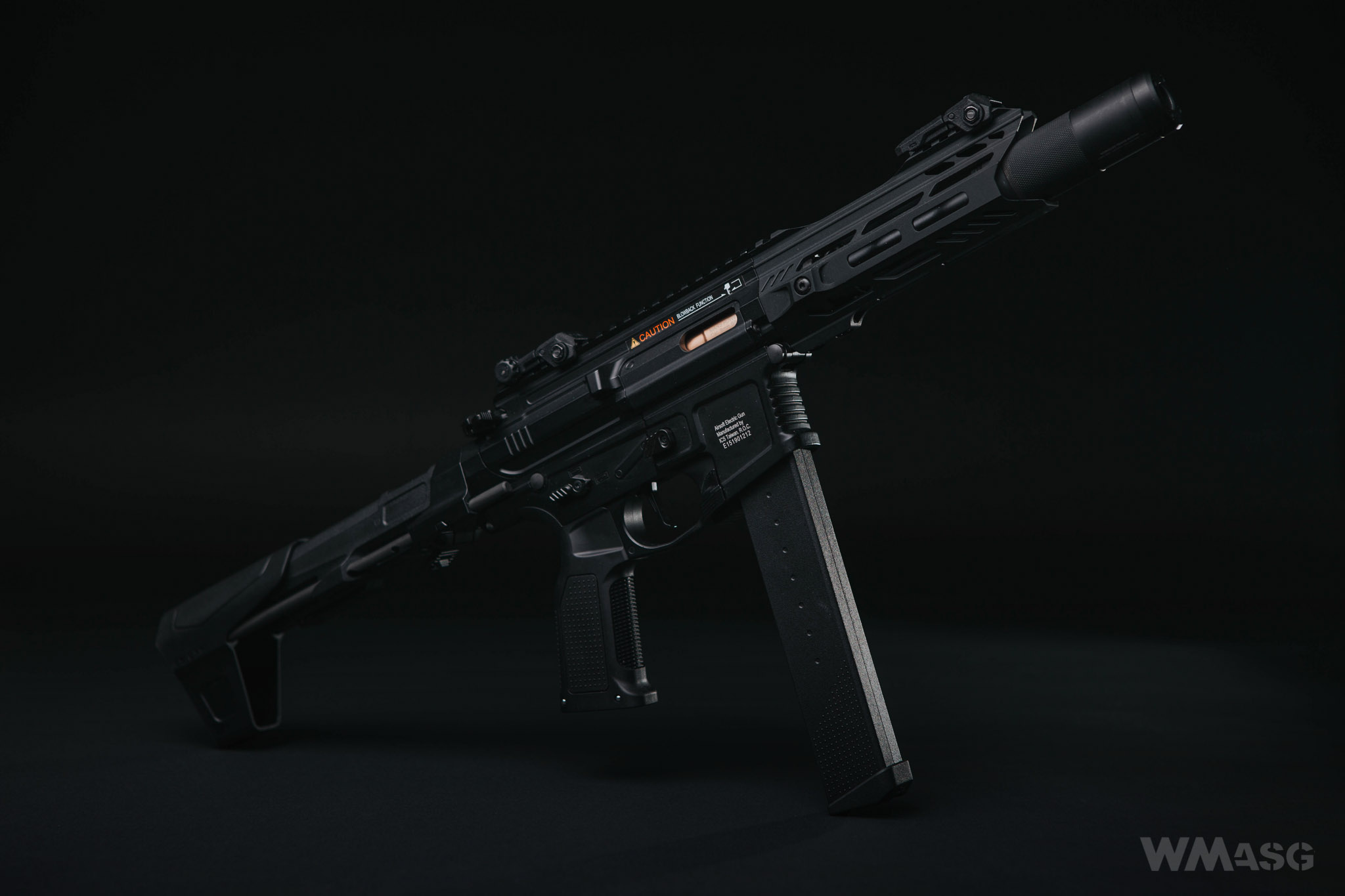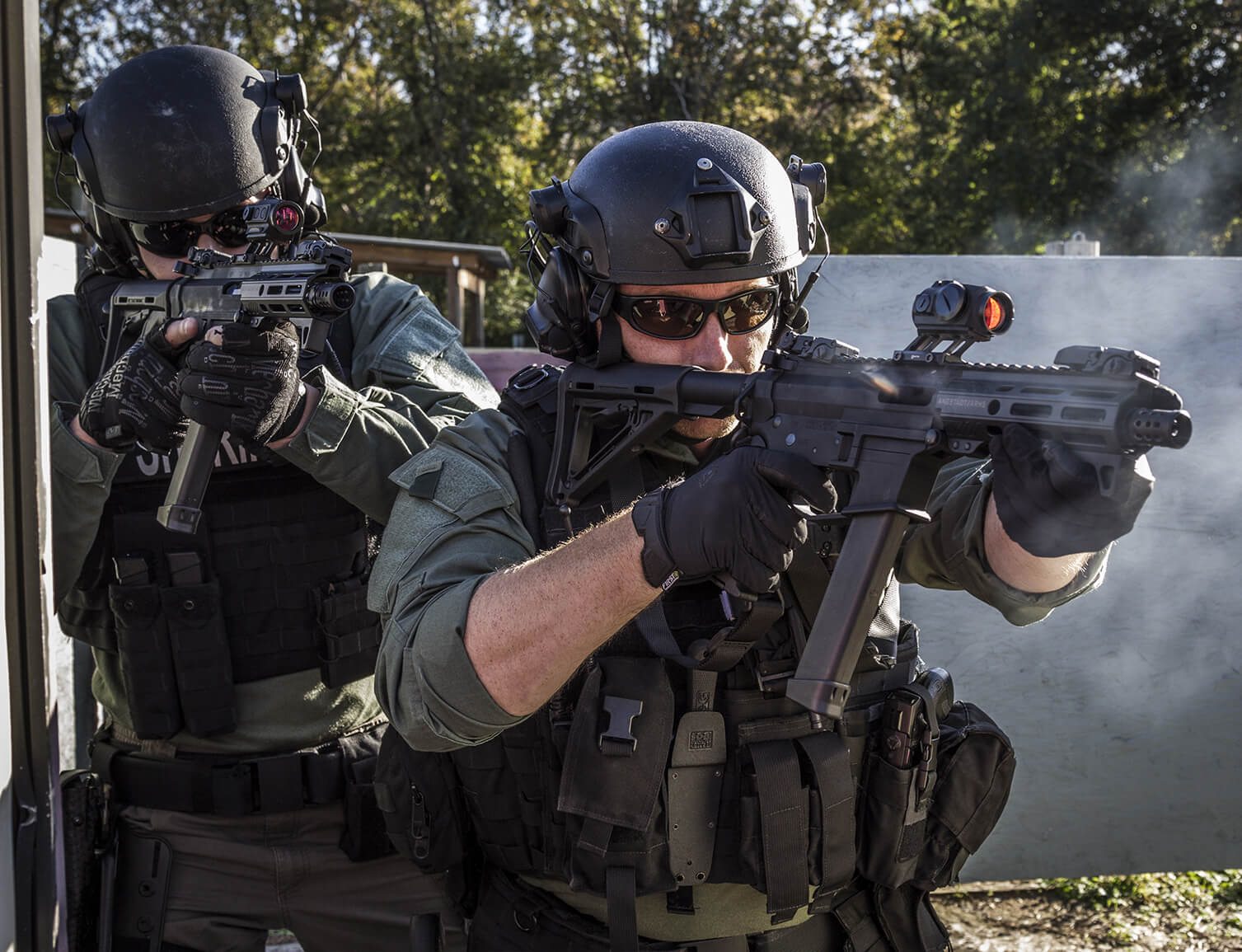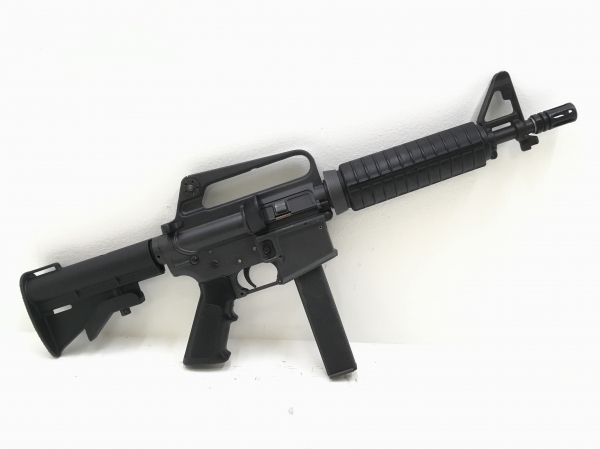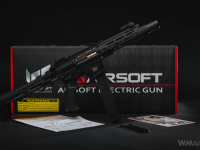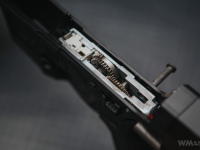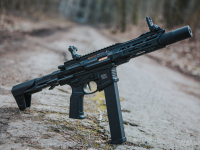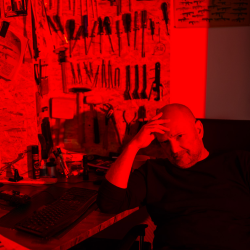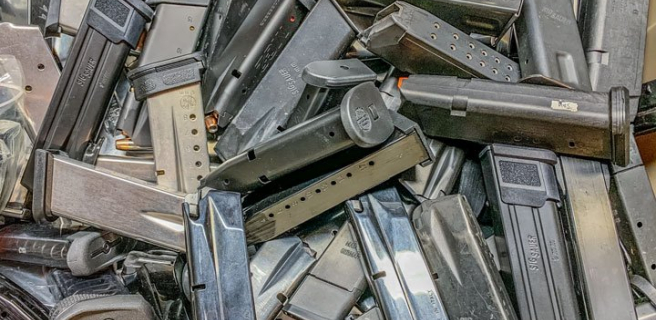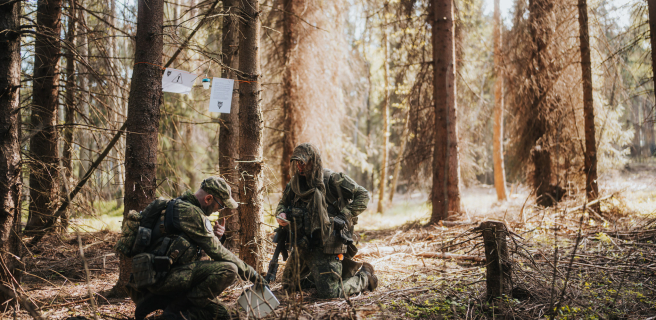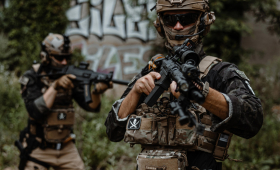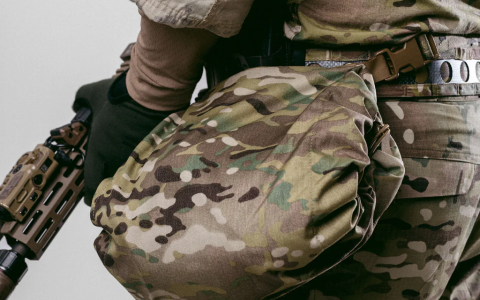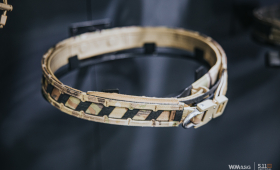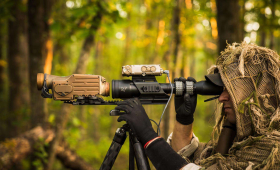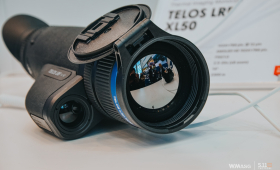CXP-MARS PDW9 is not another model of a known replica. This is an absolute novelty - first copies went to stores at the beginning of February 2020. Therefore the replica is on the market for just over a month now.
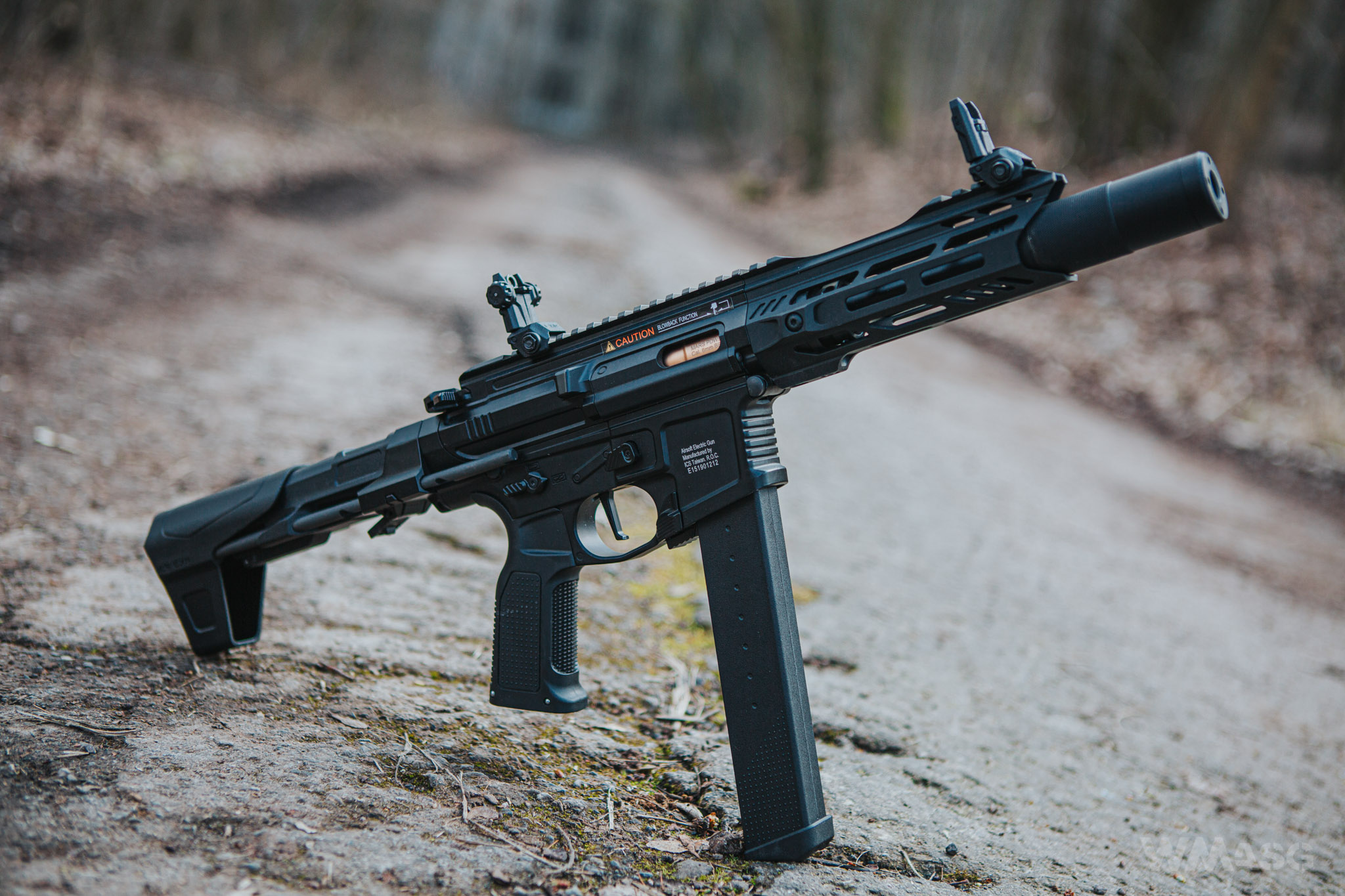
PDW9 belongs to the family of pistol carbine designs, i.e. replicas externally and in manual similar to AR-15 rifles, but feed from pistol caliber magazines, which have been gaining increasing popularity recently. This fashion, of course, was originally created on the firearms market. In the USA, 9x19 mm or .45ACP rifles are selling well, and their full-auto versions also found their way into uniformed services. Those are the Angstadt Arms UDP-9 and the UDP-45, just to name a few.
And by the way, it's worth remembering that the first weapon of this type was based on the M16A2 Colt 635 SMG from the early 1980s. This weapon can still be seen in movies and news reports (photo: www.chestercountyarmory.com).
A somewhat lengthy full name indicates that the PDW9 replica belongs to the highest ICS line - the MARS series, i.e. the Modern Assault Rifle System, as the manufacturer calls it. Externally, MARS replicas are distinguished by modern shaped metal receivers manufactured using digitally controlled milling machines and the characteristic handguard made in the M-LOK system. There are also differences in internal parts used, but more on that in a moment.
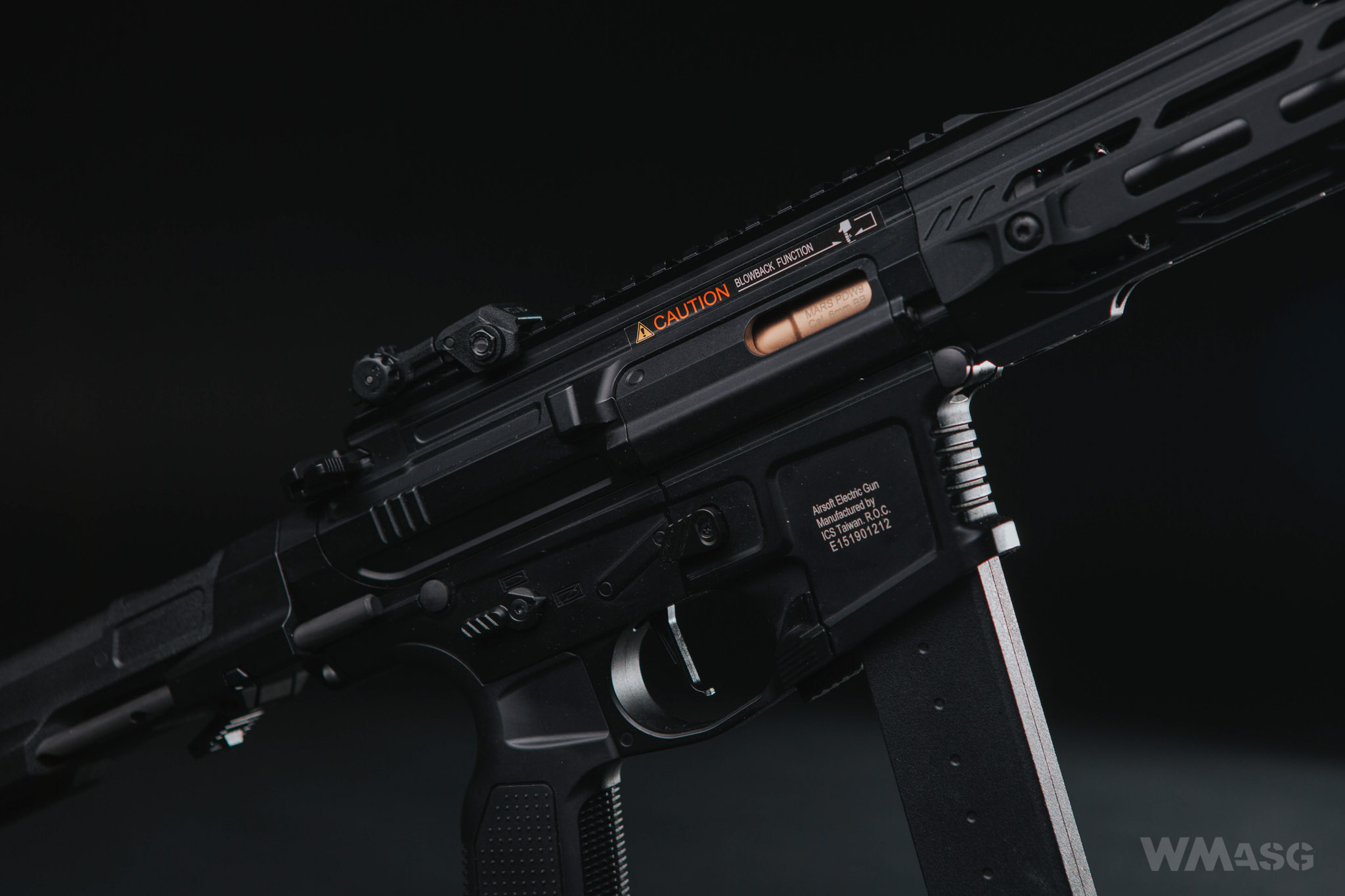
Basic technical parameters:
- overall length (collapsed/extended stock): 619 mm - 690 mm;
- inner barrel length: 160 mm;
- weight: 2700 g;
- magazine capacity (hi-cap): 350 BBs;
- muzzle velocity: 360-370 fps.
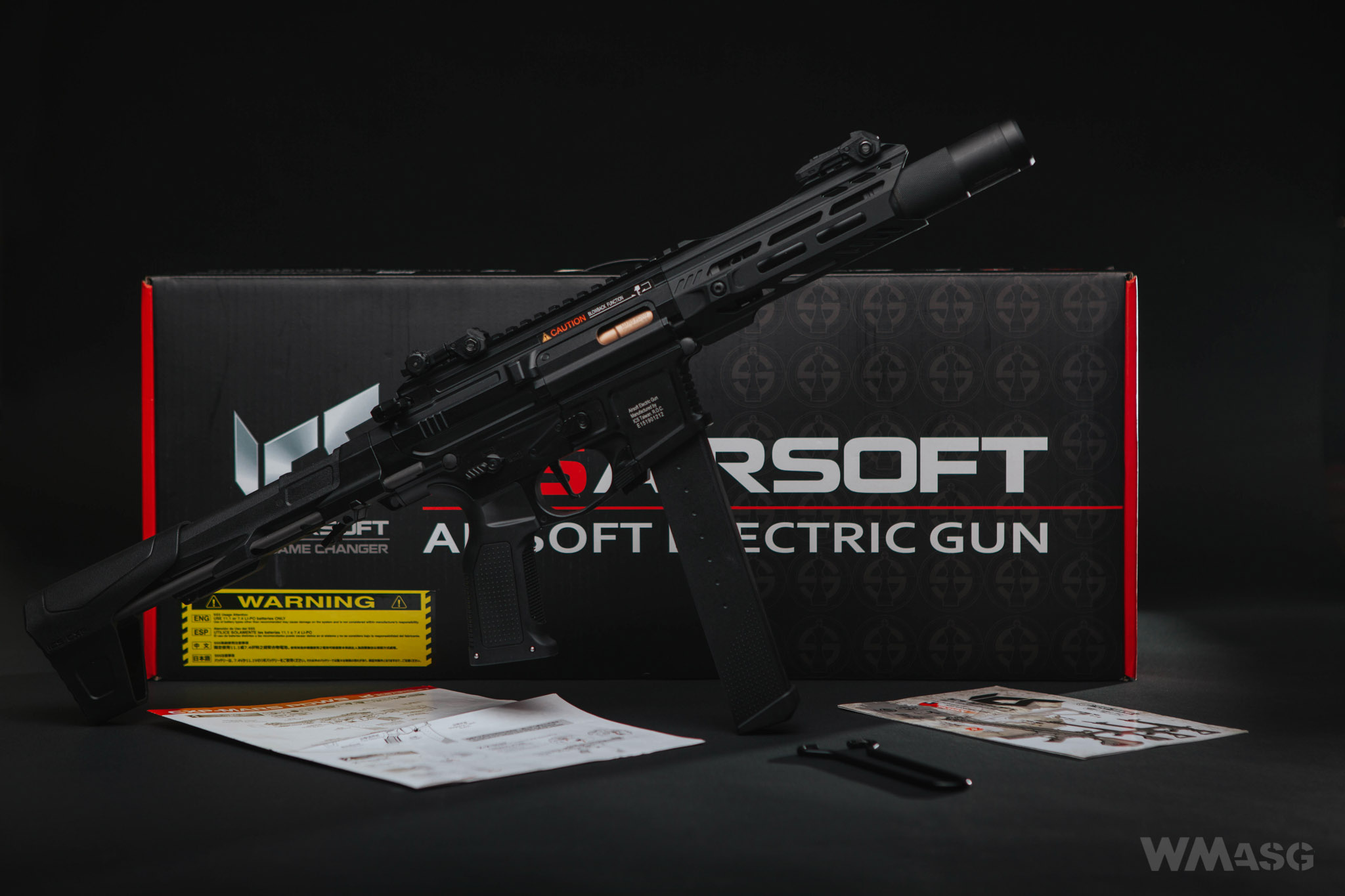
Along with the replica, we receive 1 magazine, a paper instruction manual and a barrel mounting ring wrench. A separate programming manual is included with the version that has the E-Trigger electronic control system.
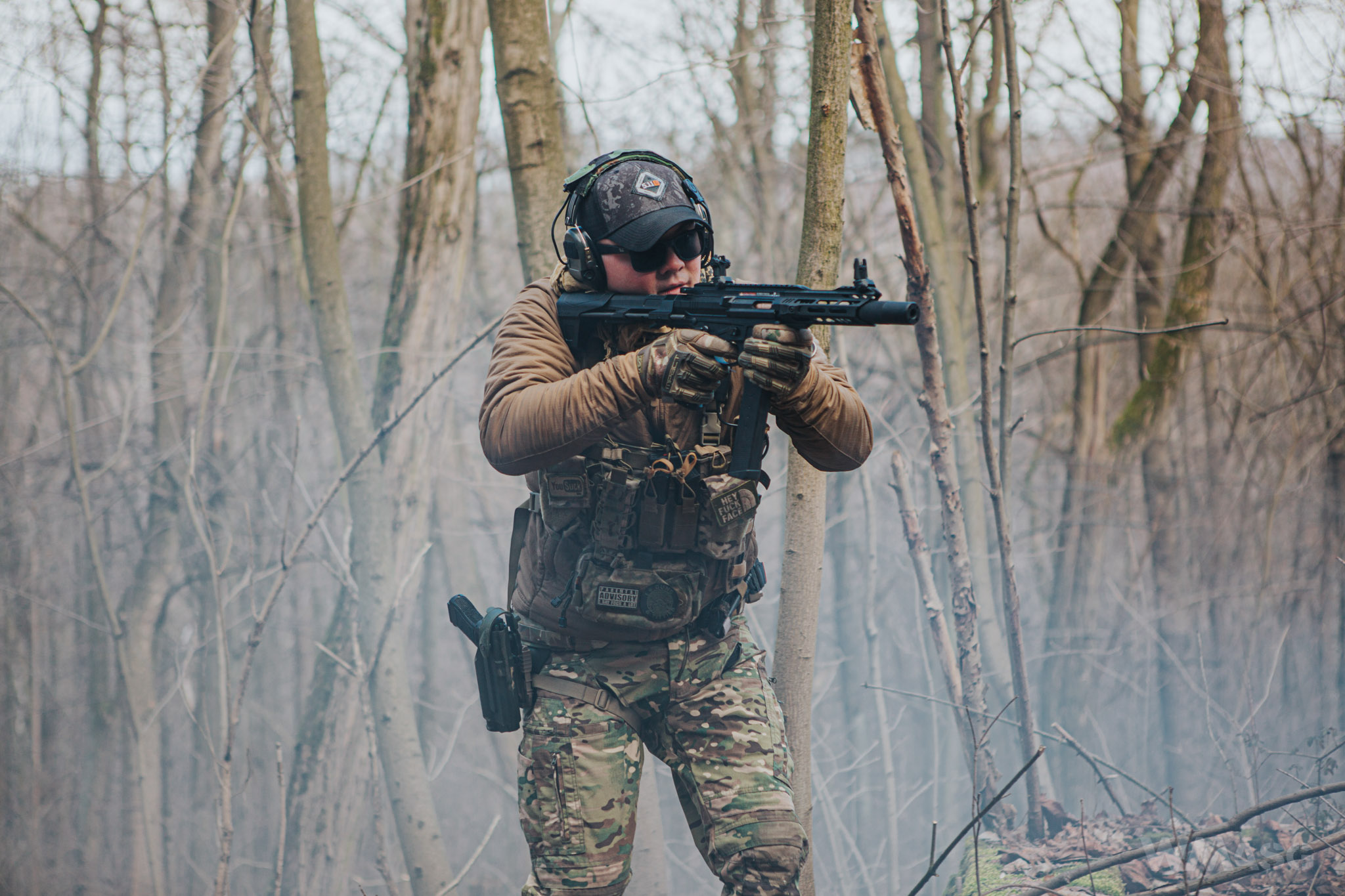
Manipulators
Double-sided manipulators are also a common feature of all MARS replicas. In the PDW9 we therefore have a clearly clicking double-sided safety/selector switch with three setting, safe, single fire, full-auto. Its additional hidden function is to release the main spring while setting the replica to safe mode. This happens every time the setting is set. It is a purely mechanical solution as the selector plate in the safe position moves an additional lever and releases the anti-reversal latch. It lessens the wear of internal parts a bit, but it can also a bit irritating.
Another manipulator is the magazine release button. A solution similar to that of many modern ARs was adopted: the button can be conveniently operated with the index finger of the right hand or the left hand thumb.
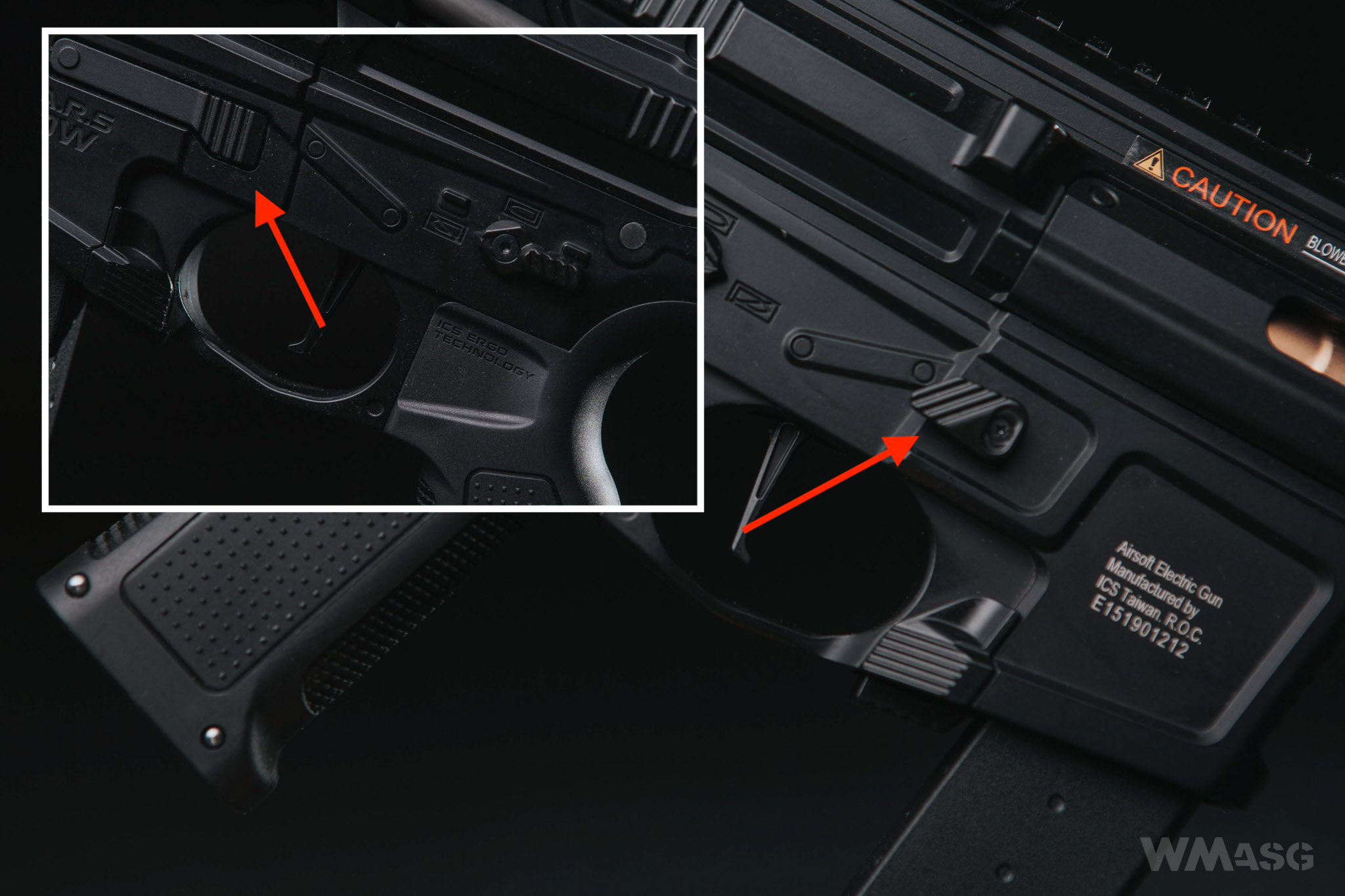
However, ICS went a step further and used an additional, third way to release the magazine in the PDW9. The third button is placed on the bottom, between the magazine well and the trigger guard. This way the thumb of the hand holding the magazine can press it. This is ideal for left-handed people, for whom the first two buttons will never be comfortable.
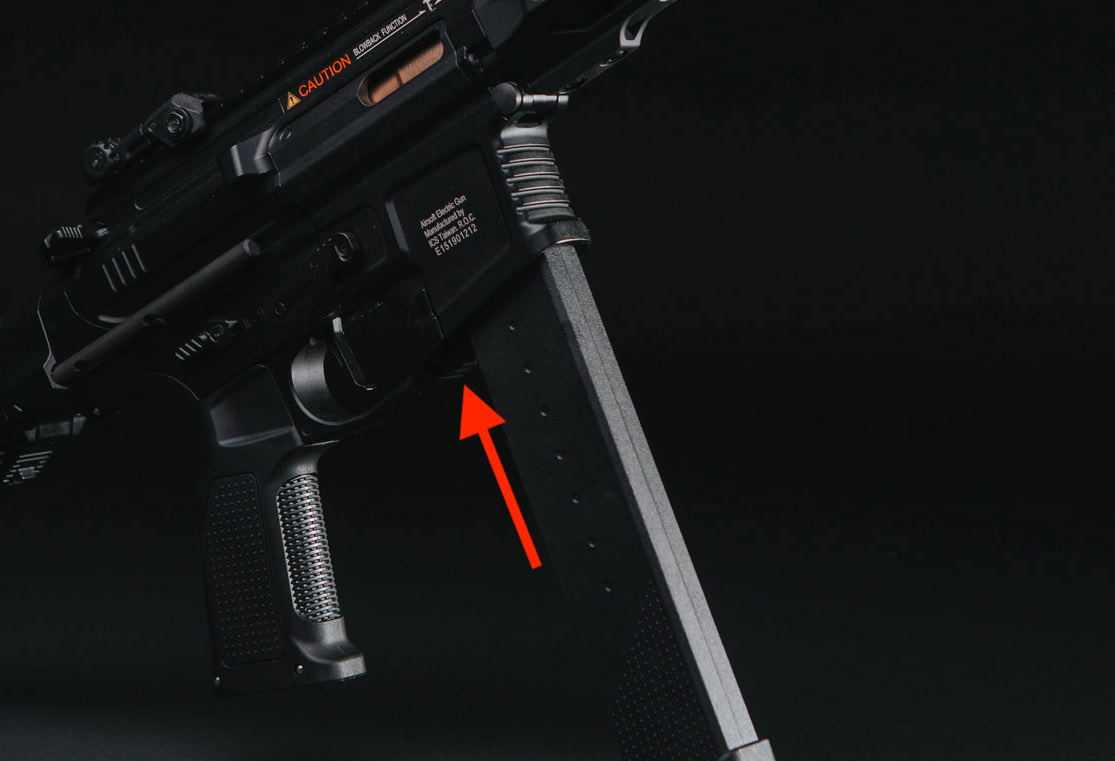
The replica has a mechanical blowback (EBB), and the dummy bolt carrier is locked in the rear position when the HopUp system is adjusted, therefore also a functional bolt catch was installed in the replica. Here it was moved to the bottom of the magazine well. It is placed on the sides of the trigger guard. This allows to quickly drop the dummy bolt carrier with the index finger of the leading hand or the thumb of the supporting hand.
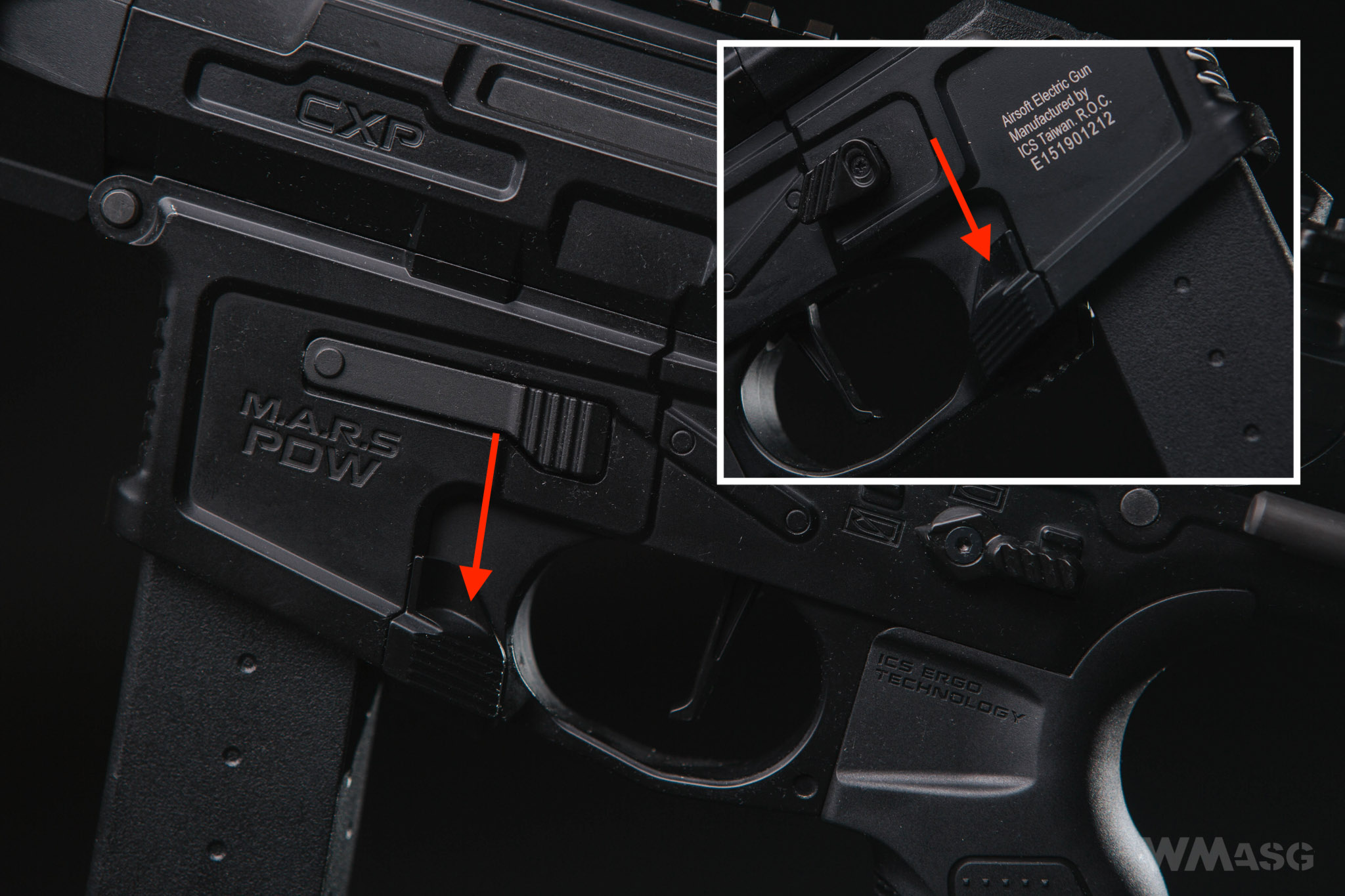
By the way, pay attention to the enlarged levers of the charging handle. They are designed in such a way that each of them releases the catch.
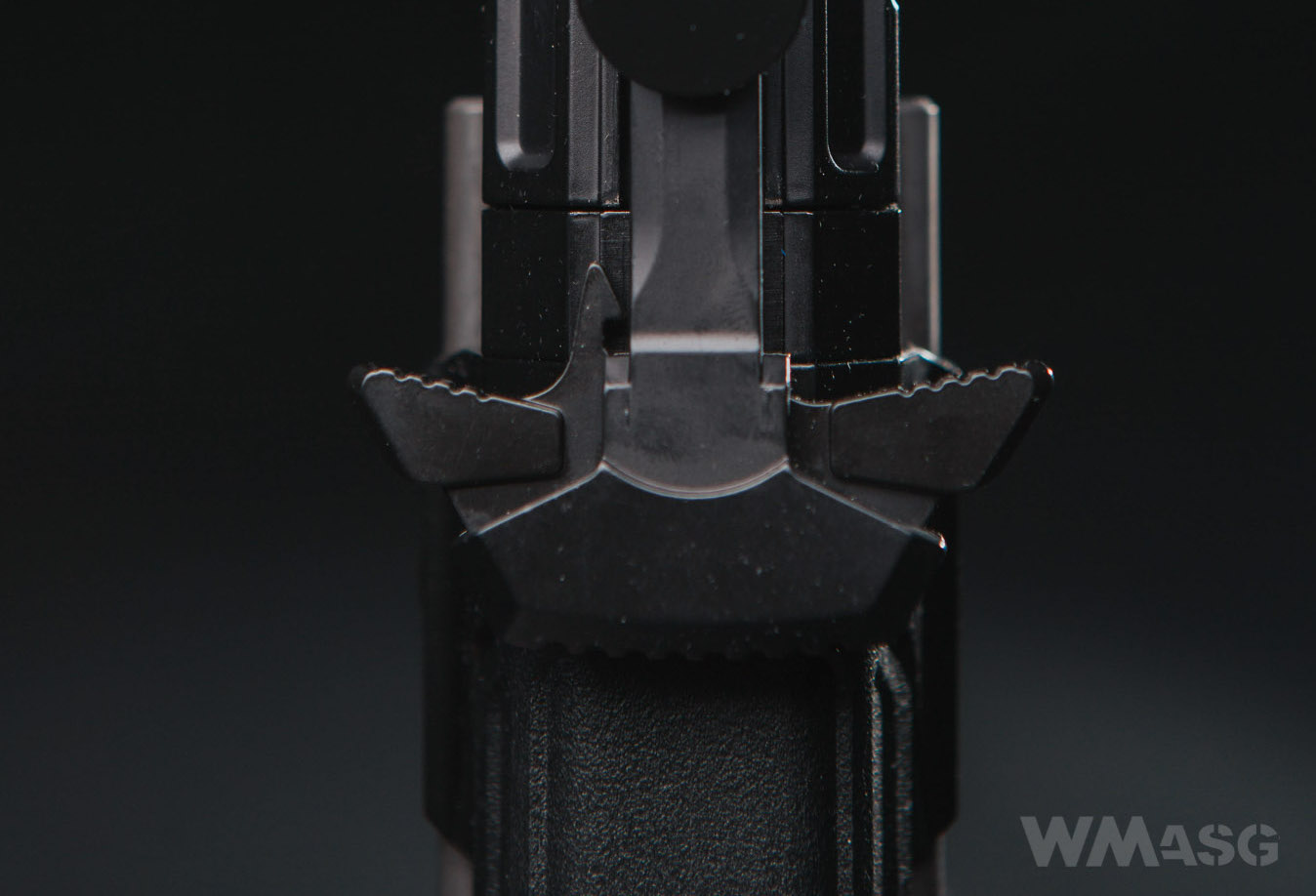
HopUp adjustment is done in the same as in all AR replicas. We gain access to the chamber through the ejection port after locking the dummy bolt carrier in the rear position. It should be noted that the PDW9 does not have a cover closing the window. The dummy can be seen all the time. It has good looking 6 mm caliber markings on it :).
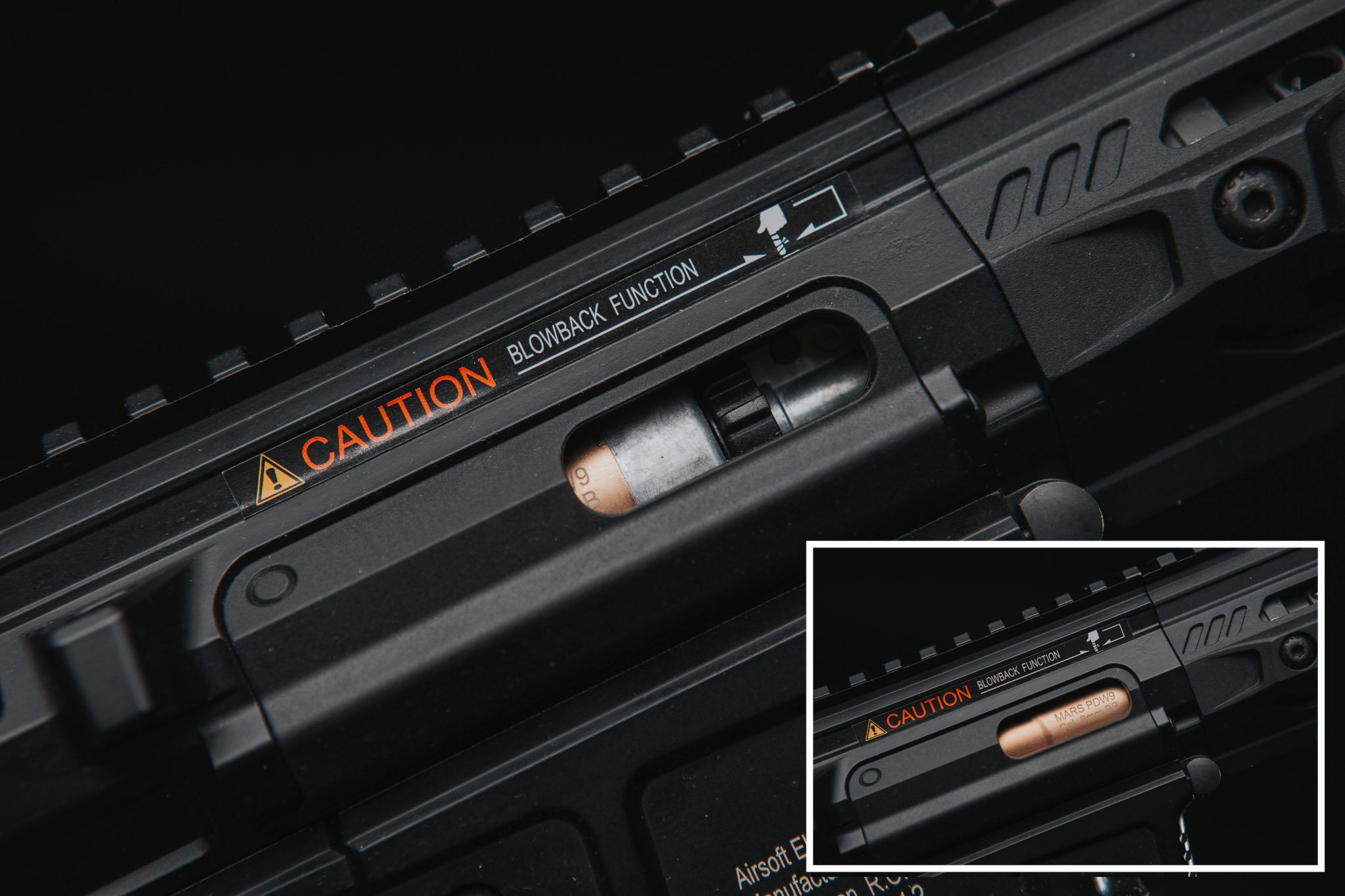
The replica's chamber is standard for ICS products with blowback. Its a metal (ZnAl) one-piece chamber with an adjustment ring perpendicular to the barrel axis (rotary type).
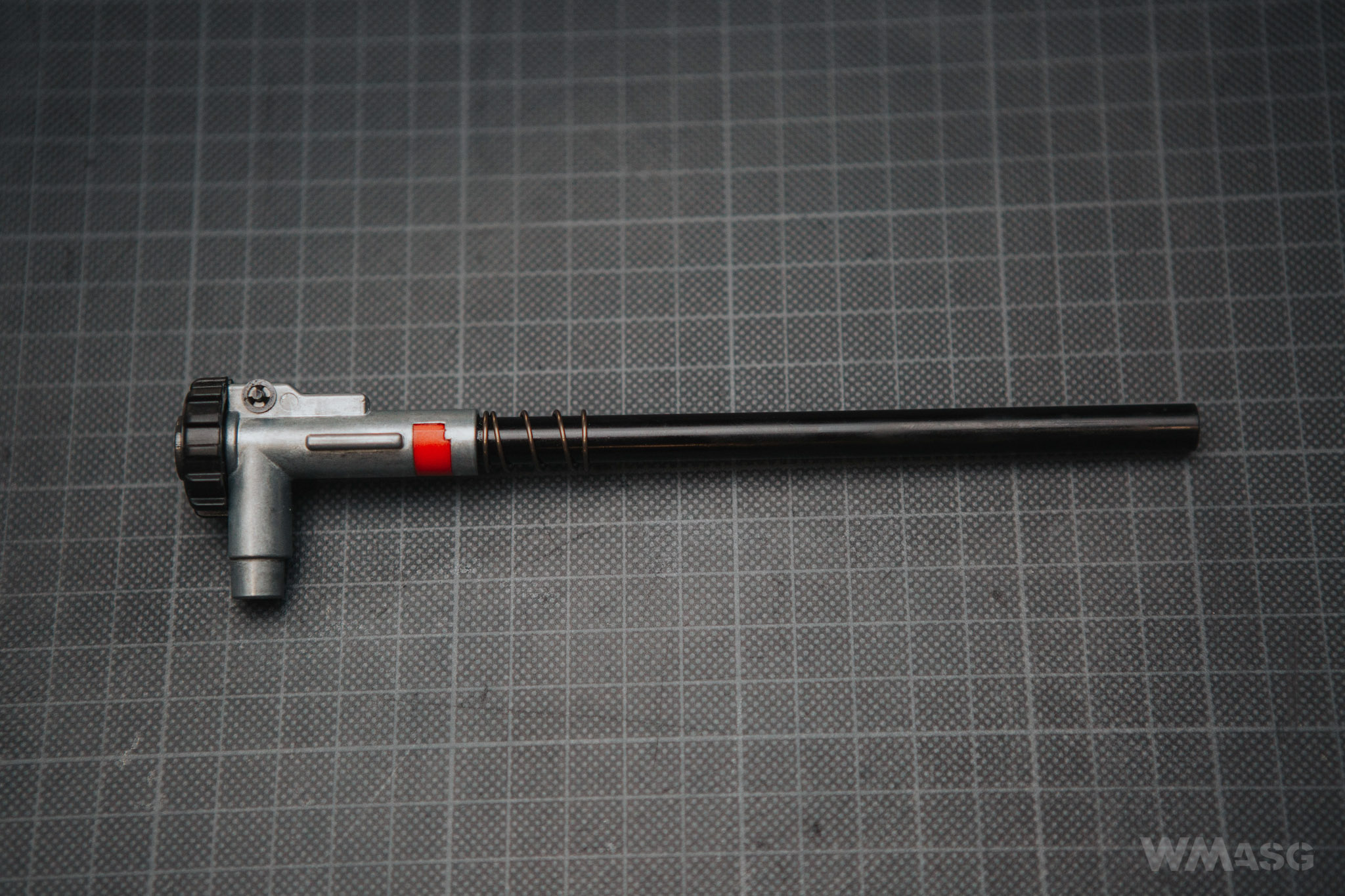
The sights
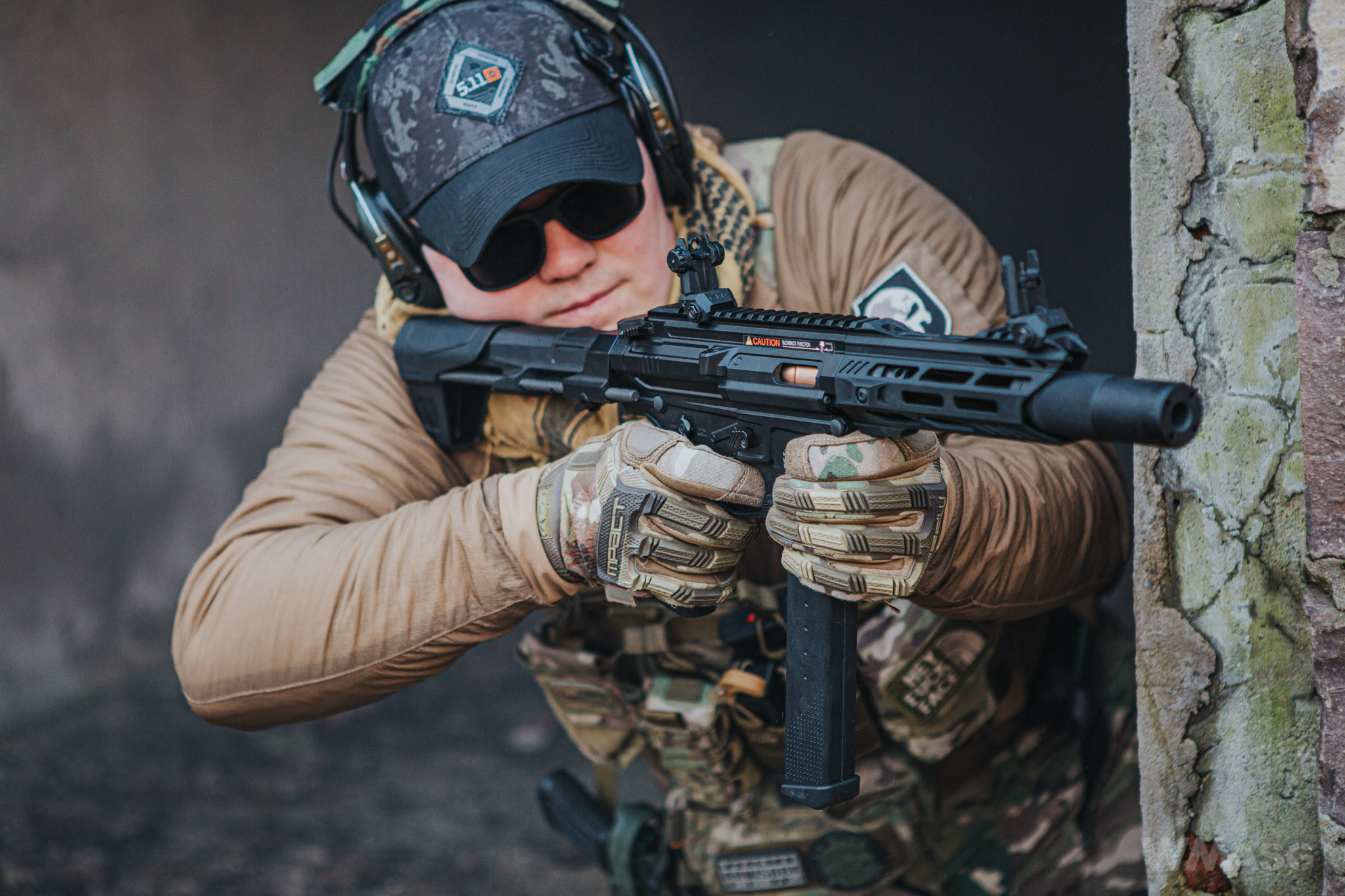
The replica is equipped with CFS folding sights made of plastic. The rear sight aperture is adjustable horizontally and the front sight is adjustable vertically. Their characteristic feature is that they are actually low profile sights as you can use them without flipping them up, although then you lose the ability to adjust the front sight. These are one of very few sights on the market that have such a feature. Of course, when using optical sights or opto-electronic devices, the sights can be taken off the replica.
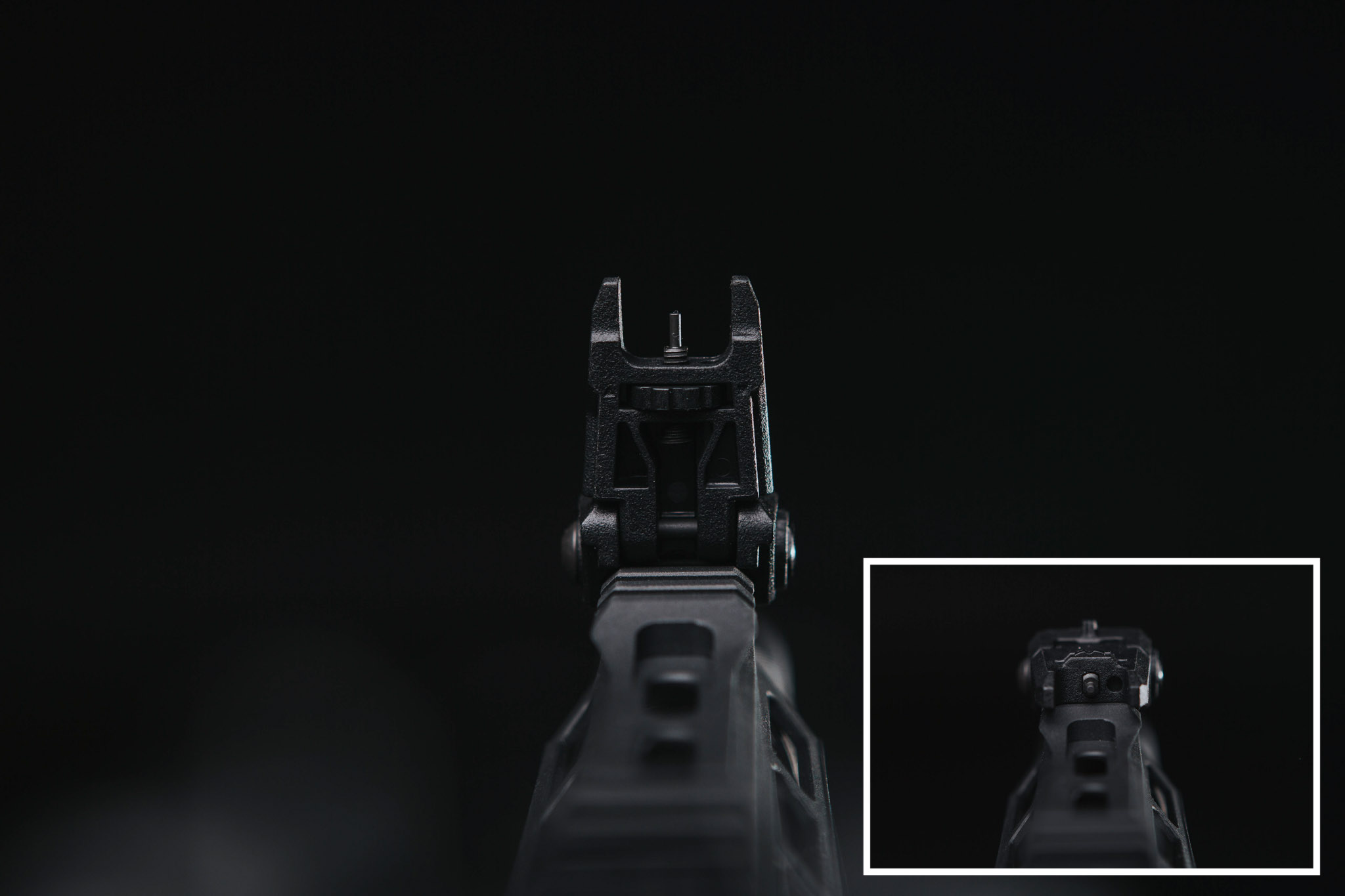
Contrary to appearances, the sight does not have two aperture settings. The notch aperture is only available in low position.
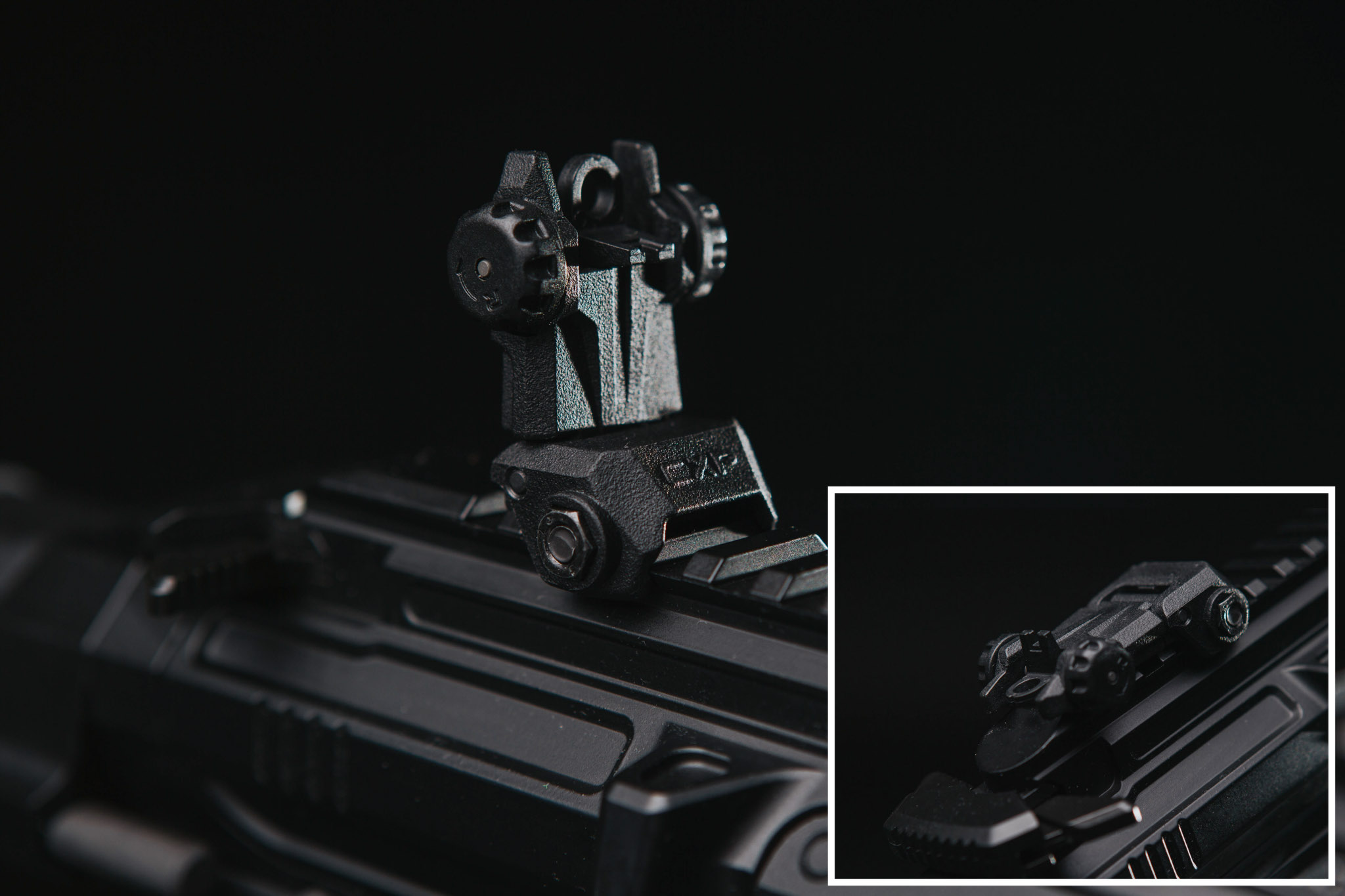
The stock
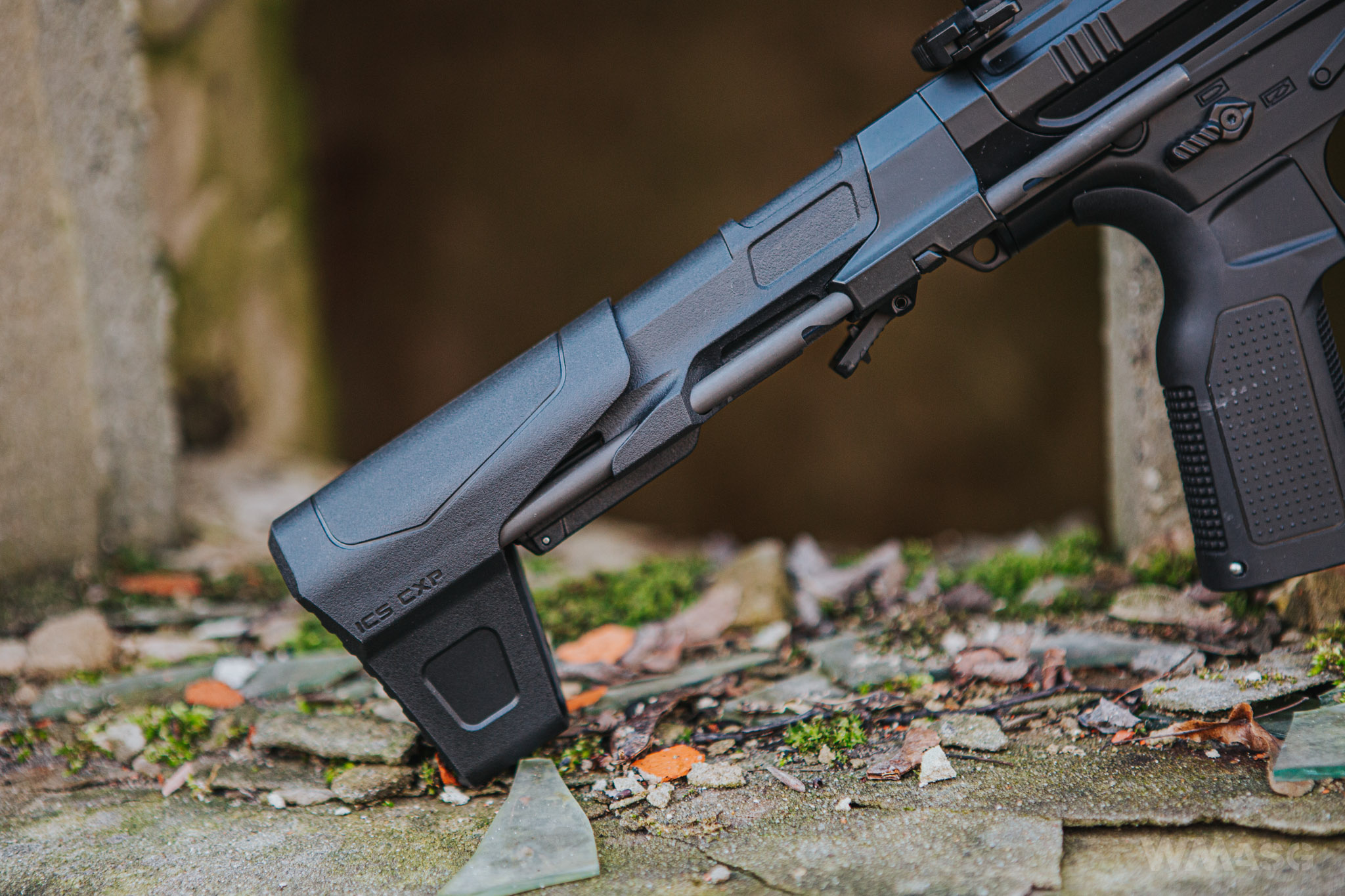
The replica uses a PDW type stock of a completely new design. It still moves on two metal guides that allow for a three-step length adjustment, but the compartment in which the place for the battery is located is slightly longer. In addition, its cross-section has been changed and enlarged. In this version of the stock we still will not be able to fit a large-capacity battery, but the whole process of placing the battery inside is now faster, more convenient and presents less problems with wires routing. Still, the rigid wires and fuse are still slightly bothersome. A 7.4V LiPo battery fit without problems. An 11.1V battery require some tinkering.
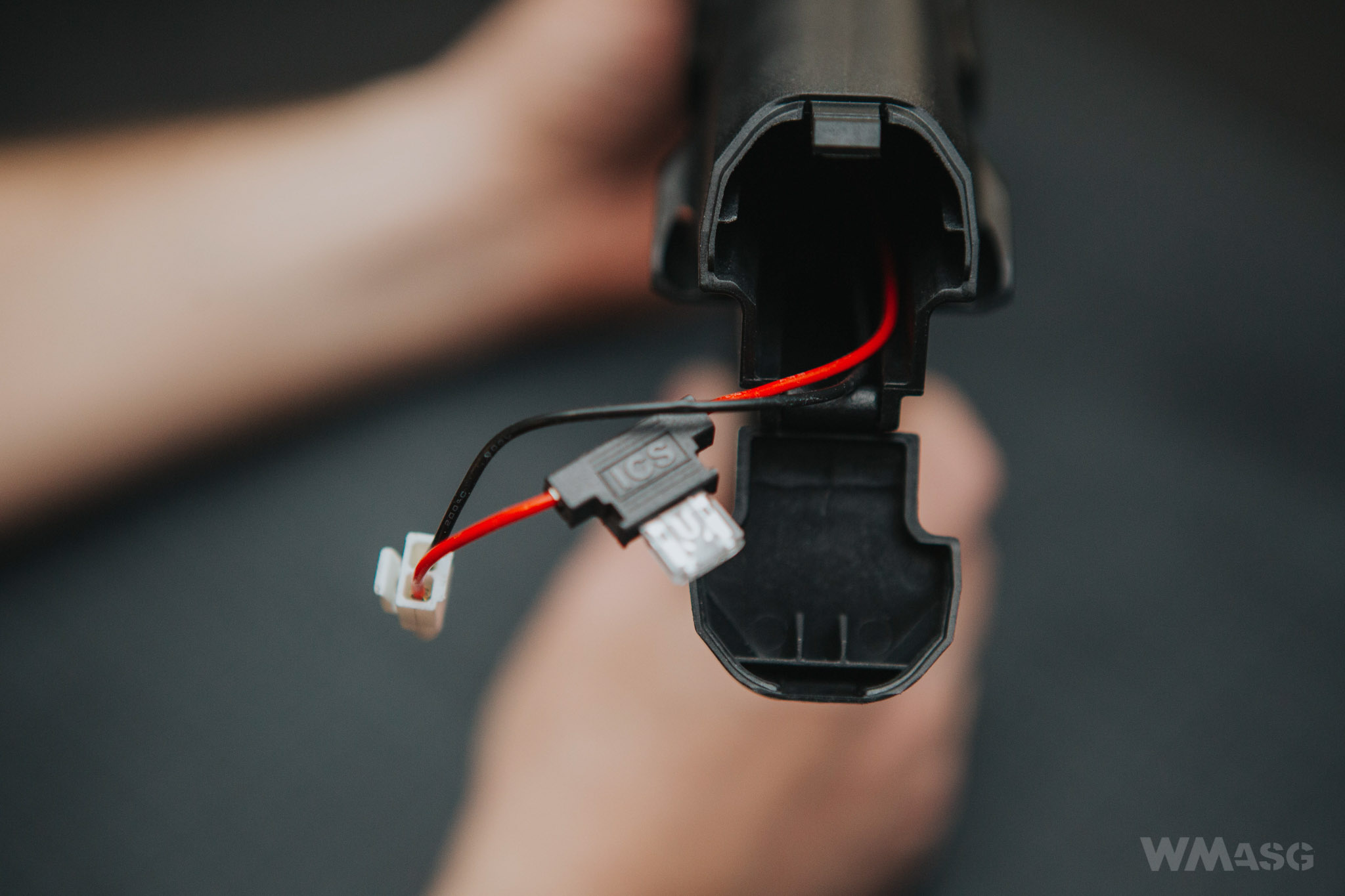
Access to the battery compartment is gained after pressing a latch and opening a flap.
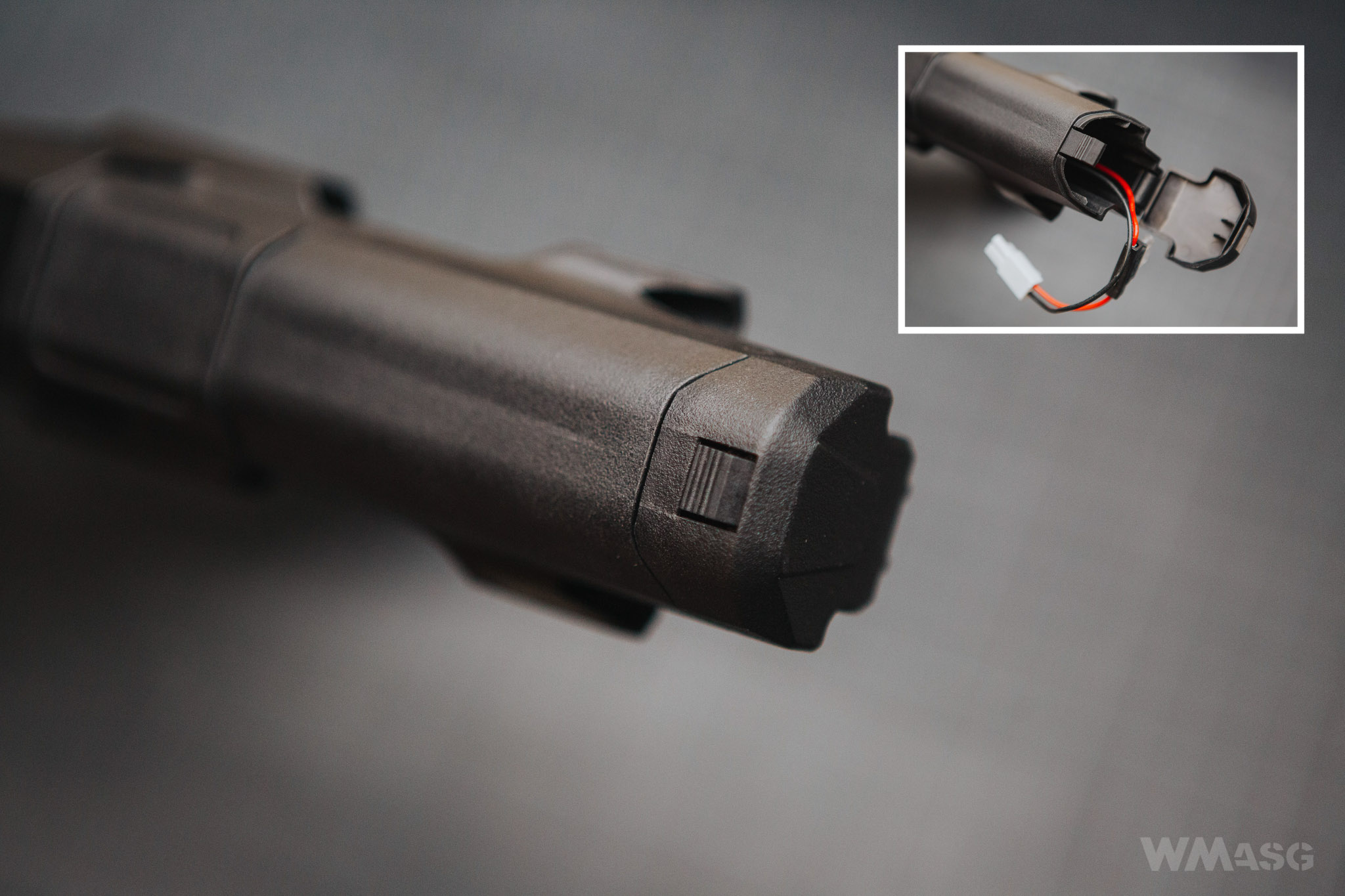
A button on the bottom (red arrow) is used to adjust the stock's length. Pressing the extra latch located inside it (white arrow) allows you to completely slide the stock out of the guides.
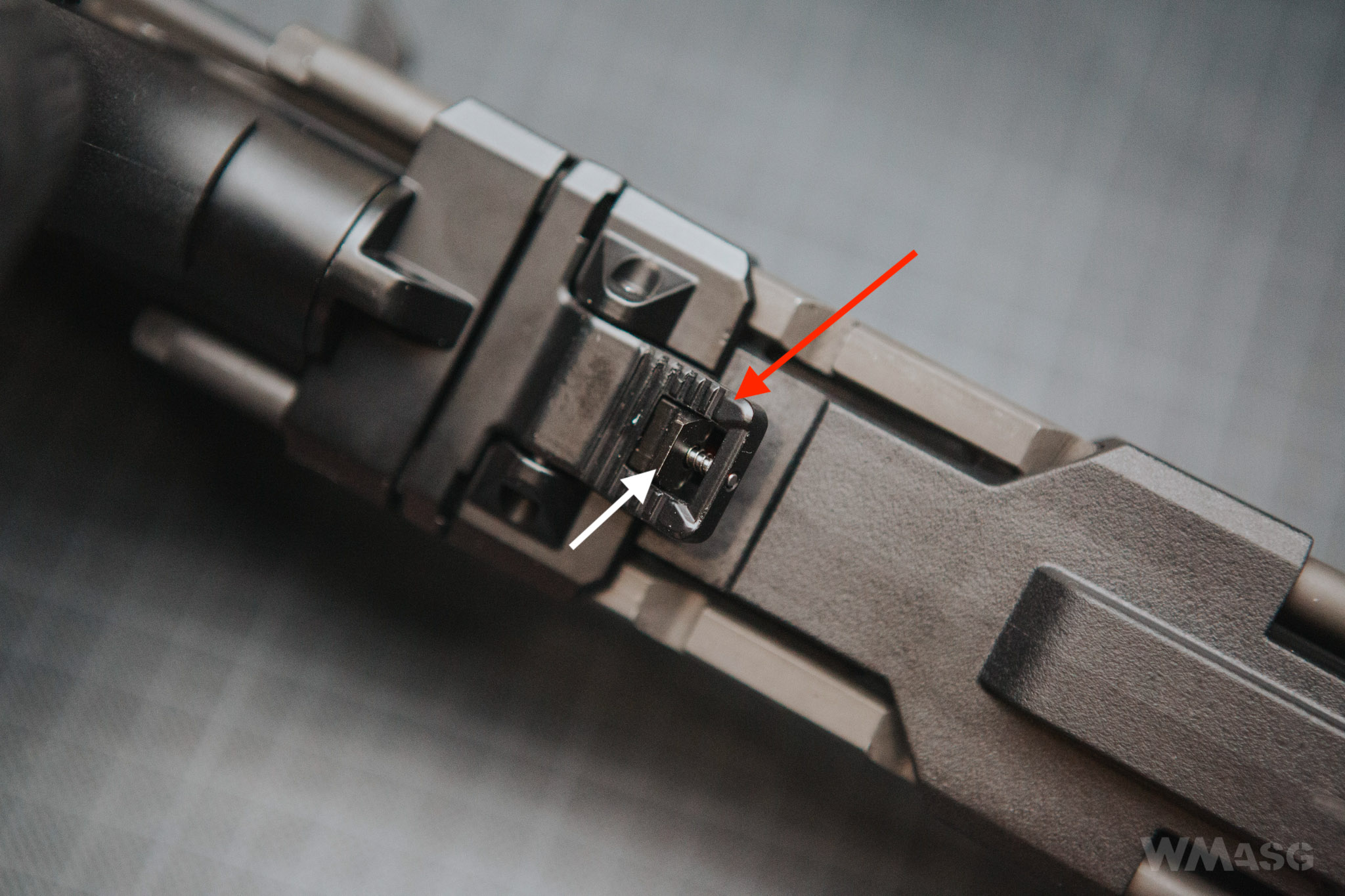
The handguard
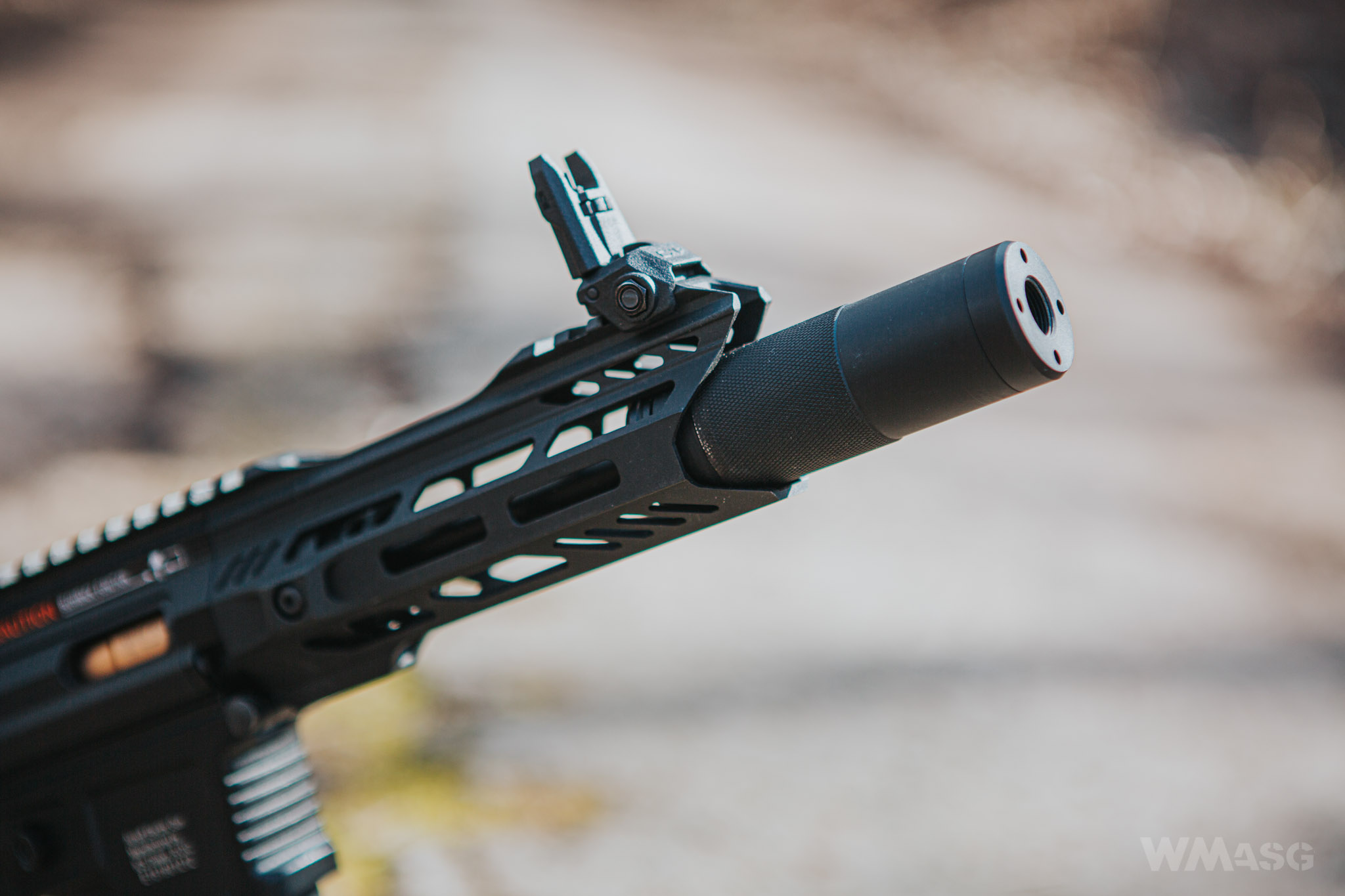
The 6.5-inch handguard has only a short section of a top Picatinny rail at the very end and the front sight bow tie is mounted on it. Apart from the top, M-LOK sockets were placed on each surface of the handguard, which has an octagonal cross section. It is stabilized with 3 screws on the mounting ring. Two screws are placed on the sides, a third one at the bottom. The mounting method is firm and the handguard has no play. The replica is supplied with a short, 10 cm long, silencer with a 14 mm counterclockwise thread. When attaches it is slightly embedded in the handguard. In its place, you can optionally use any flash hider which will shorten the replica even more. Unfortunately, the replica does not have a dummy gas system.
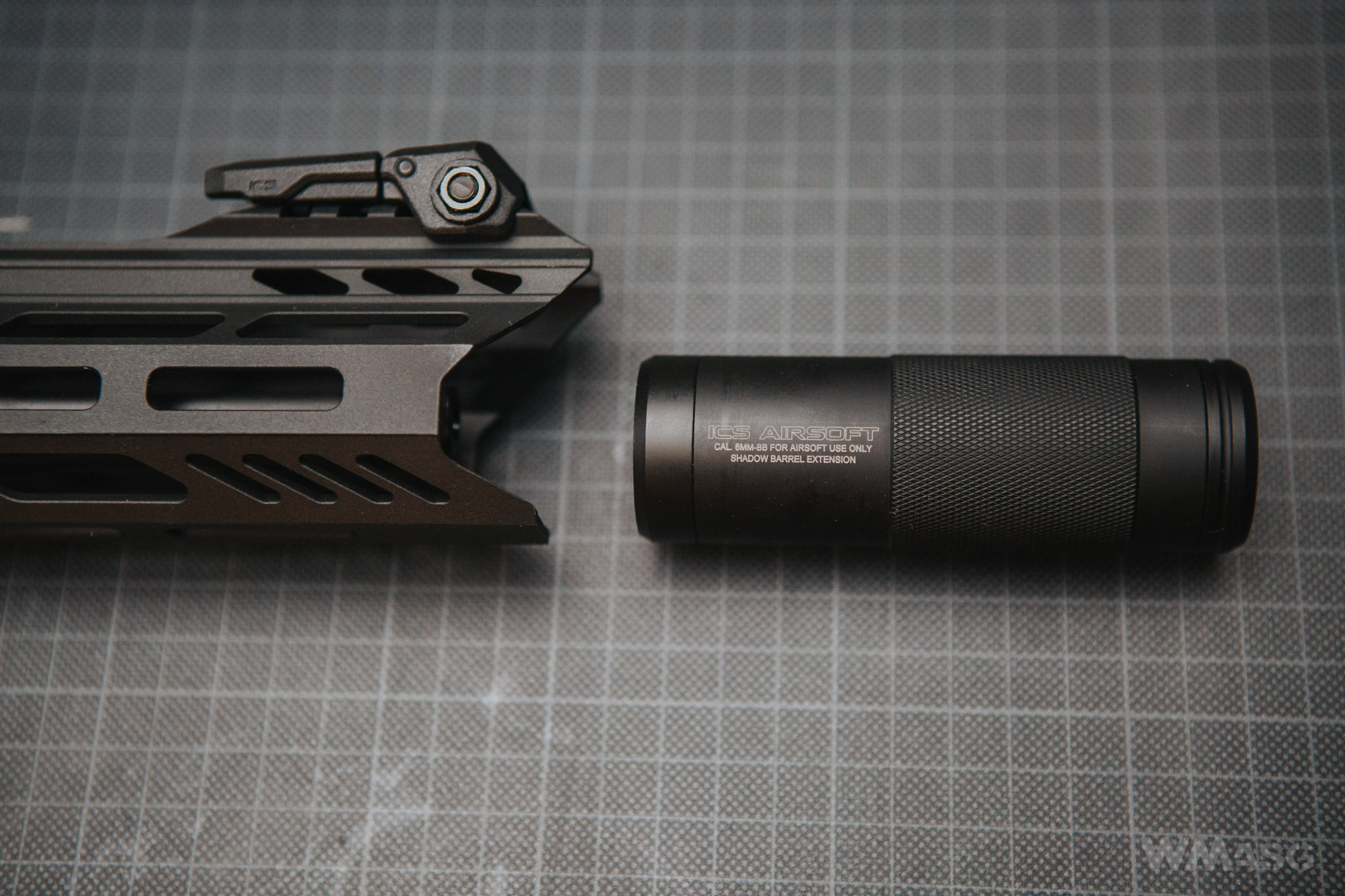
The mechanism
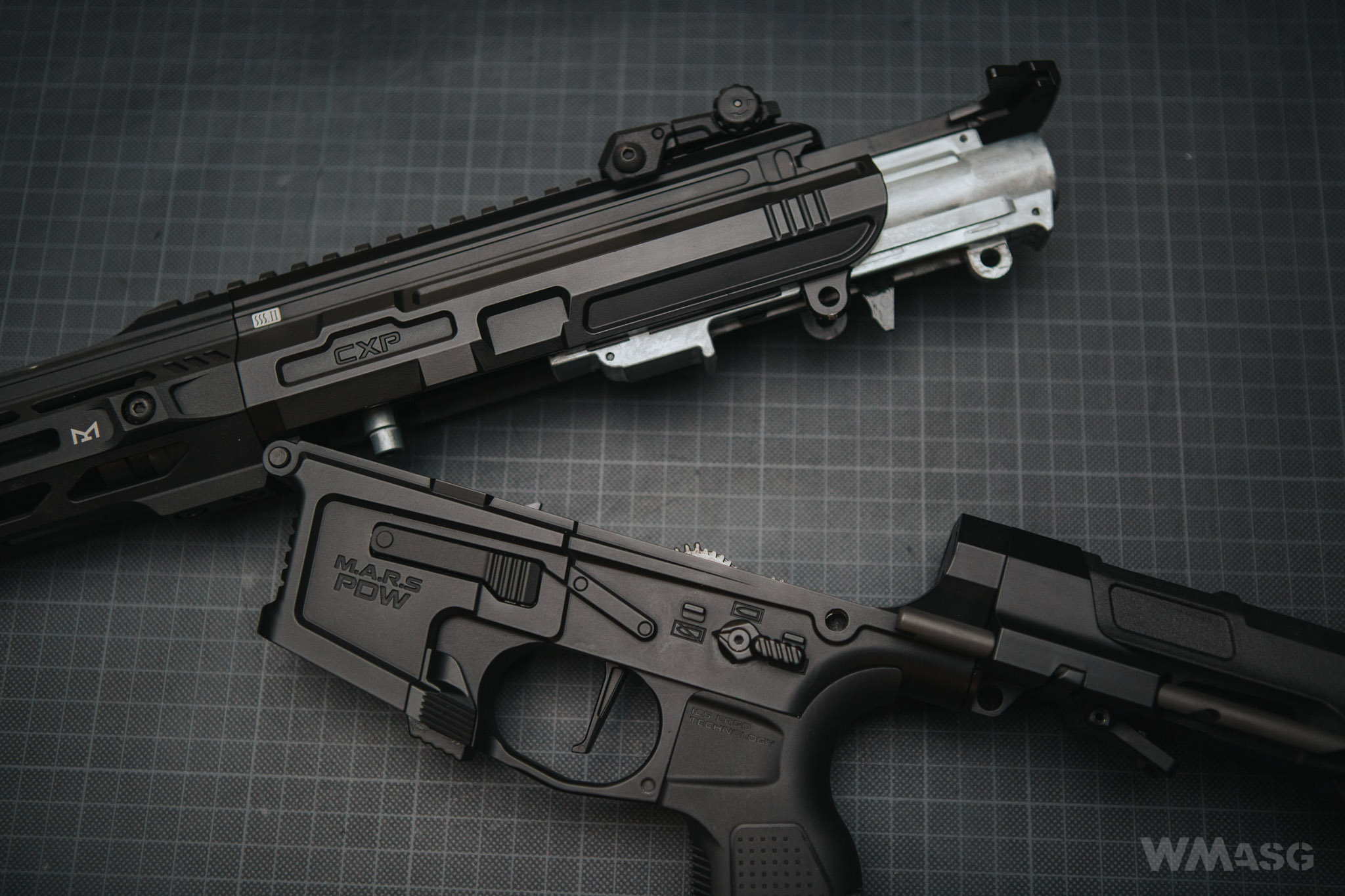
The replica is powered by a two part gearbox in the highest configuration currently used by ICS. It also has a quick spring change system. The gearbox is worth praising, because it is a mechanism that, in our opinion, provides the fastest and most convenient method of changing the muzzle velocity of a replica. By taking out the rear pin and splitting the carbine one gains access to the top of the gearbox. Now there are two ways we can chance the amount of FPS: we can either replace the whole upper receiver, which literary takes two seconds or, using an Allen key, replace the spring itself. You cannot make it faster than that.
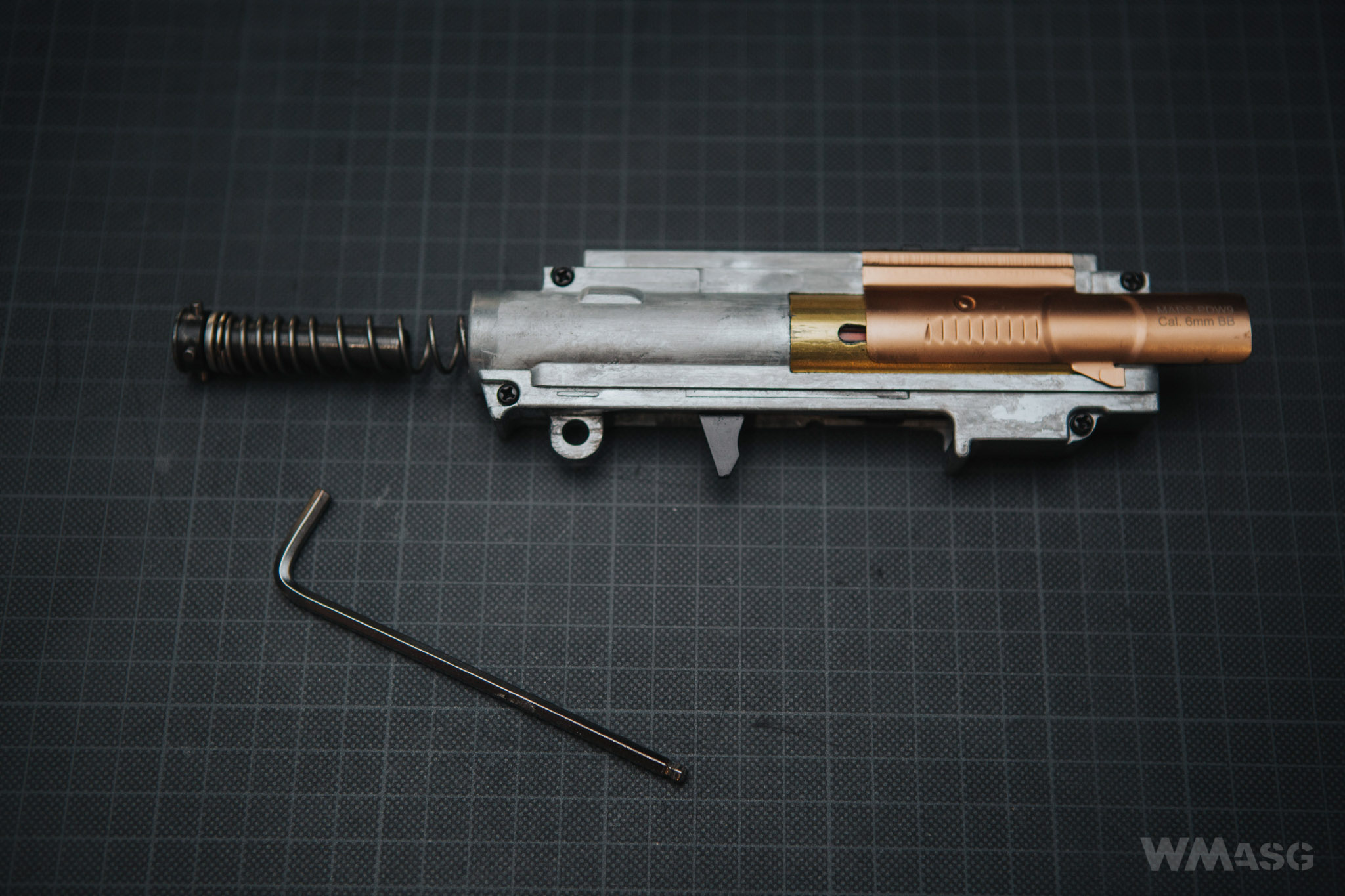
When putting the replica back together again, after replacing the spring or performing other maintenance tasks, one has to remember to rotate the sector gear in such a way that the teeth cooperating with the piston are completely hidden in the outline of the bottom part of the gearbox. Preferably in a position just before the teeth of both the gear and the piston start to interact with each other. Attempting to forcefully close the replica with teeth in a different position may damage the mechanism, i.e. the piston, the sector gear, the tappet plate.
The aforementioned reinforced internal parts of the replica are the cylinder and piston heads made of high-quality 6061 aluminum, the latter having a ball bearing, a polycarbonate reinforced piston with seven steel teeth, a bearing spring guide and sealed nozzle.
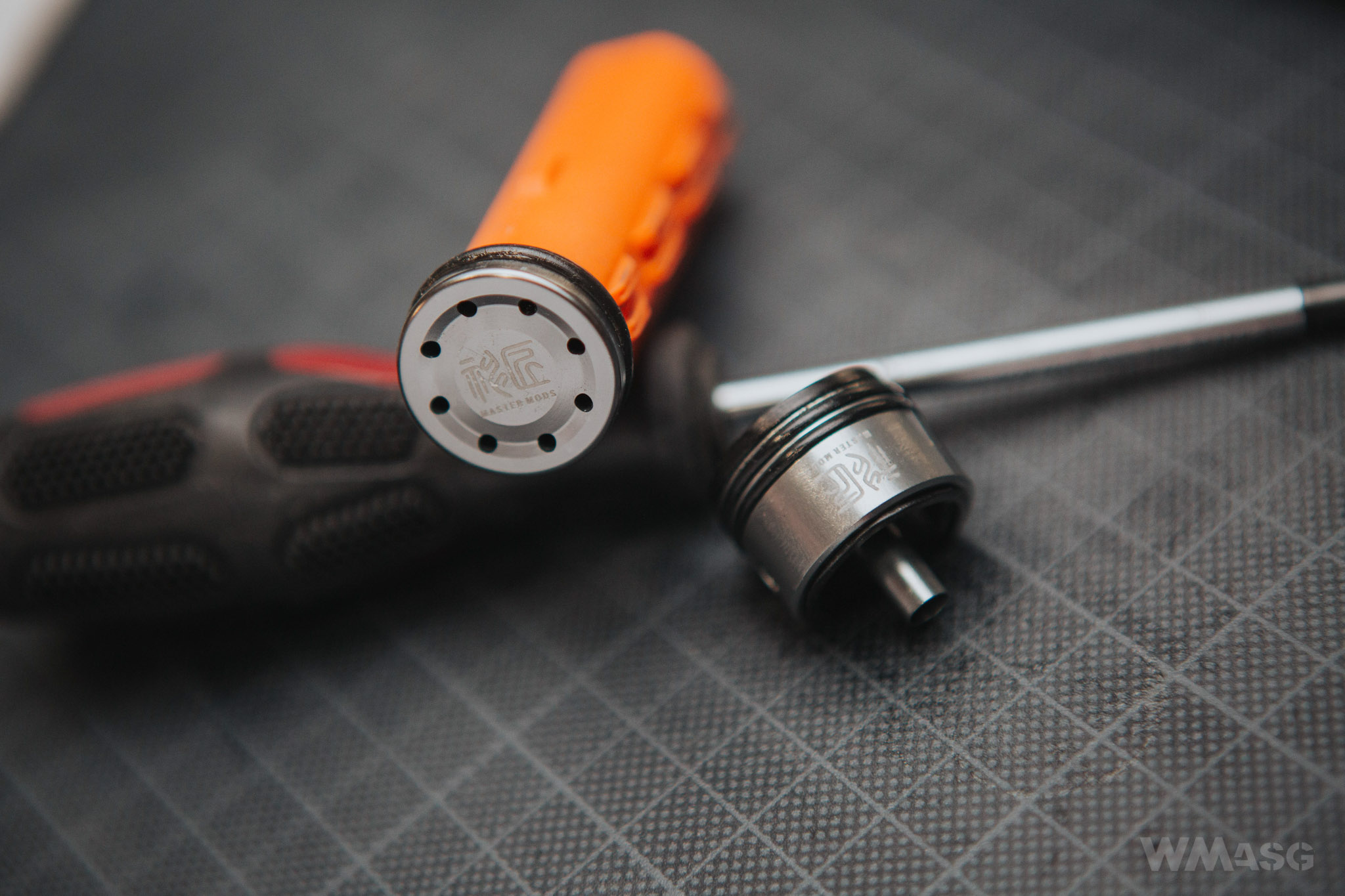
The lower part features precision-made steel gears mounted on durable sliding bearings and, in the tested unit, an advanced 2nd generation SSS E-Trigger control system and a short-stroke vertical trigger working with it.
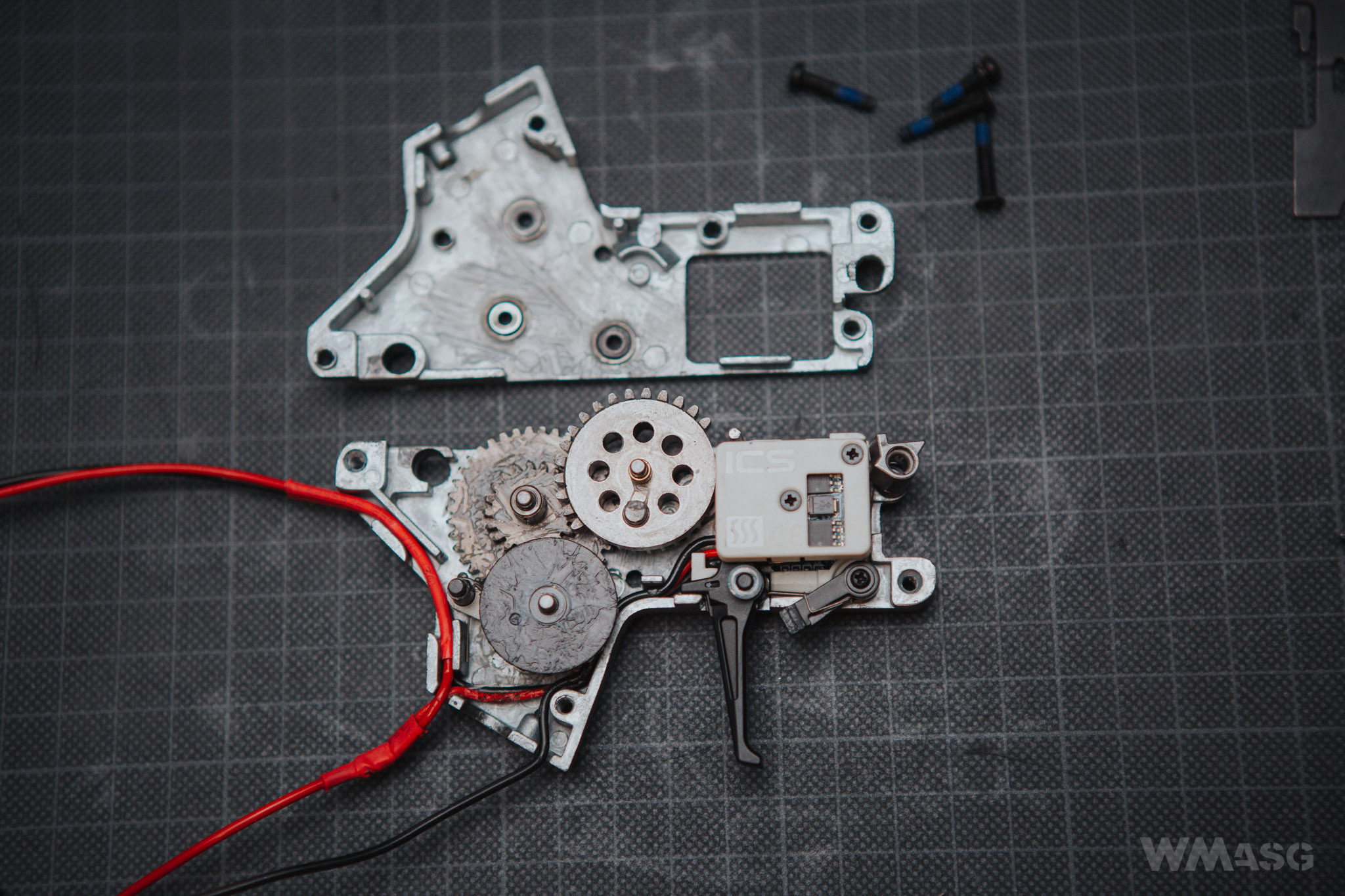
In addition to battery protection functions and a mosfet , the E-Trigger system also has the ability to switch between full-auto and 3 round burst modes. It also has a pre-cocking setting, i.e. shooting from the piston being already set in the rear position. This is done AFTER each shot, so pressing the trigger causes an immediate shot, because the spring is already tensioned. And in fact, in this mode shots are fired a little faster, which can be important during dynamic CQB games. The programming procedure is not the easiest one as there are a few sequences of moving the safety/selector switch and trigger pulls to be memorized. This is illustrated very legibly and in detail in the illustrated user's manual. There will also be a slightly cheaper version of the PDW9 available at a later date, with a classic contact switch and a mosfet, which will not have any programming features.
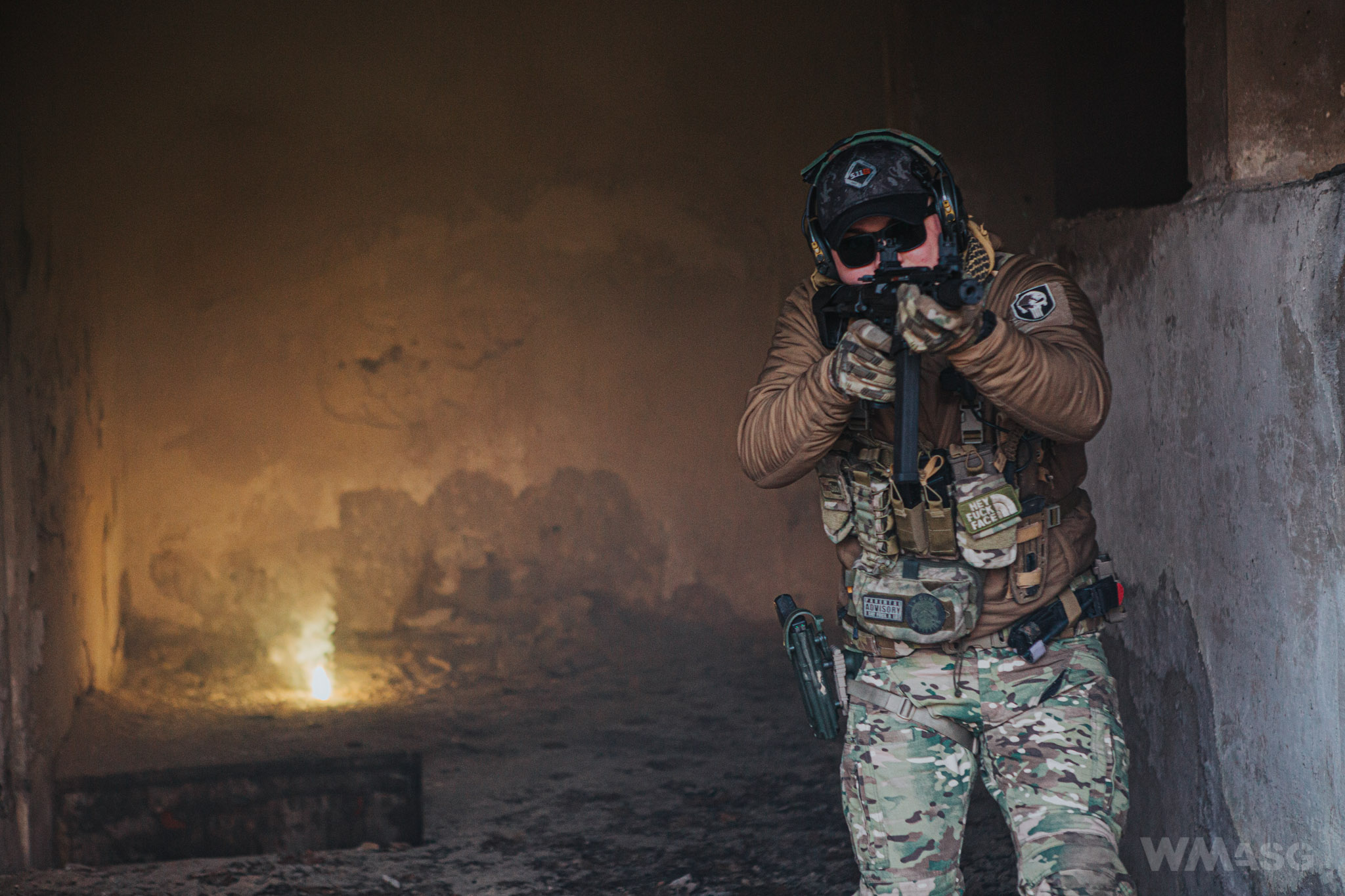
Target shooting test and muzzle velocity test
During our shooting tests, as expected, the PDW9 is operated in the same way as all AR replicas. It is worth noting, however, that the manipulators used here work perfectly and are very comfortable. We particularly liked the option of pressing the magazine release with the thumb of the hand holding the magazine. The blowback works nicely, although the recoil obviously does not exist. During operation, the system produces a slightly different sound than other EBB replicas. It is not especially louder or quieter, but it is not a buzzing-metallic sound as in other systems. In our opinion, one disadvantage is the fact that the dummy bolt carrier can stop in any position, which results directly from the fact that with pre-cocking turned off, the E-Trigger does complete the cycle, but just stops the mechanism. When pre-cocking is turned on, it is "even worse" as the tensioned spring and the piston stop in the rear position of cycle and cause the dummy bolt carrier to also stays that way. Something unheard of in a loaded firearm, but in a replica it doesn't bother at all.
Muzzle velocity measurement
Open Blaster 0.2 g BBs
1. 368.8
2. 367.0
3. 369.2
4. 370.4
5. 373.0
6. 370.4
7. 372.8
8. 372.4
9. 368.0
10. 369.3
An average of 370.1 fps. Spread: 6fps.
Rate of fire using an 11.1V 1200mAh battery - 18 rps. On a 7.4V battery with similar capacity - 16.2 rps
Target shooting test
An enclosed shooting range, 0.25 g G&G BBs, HopUp was initially adjusted. Distance to the target - 25m.
Spojedynczy
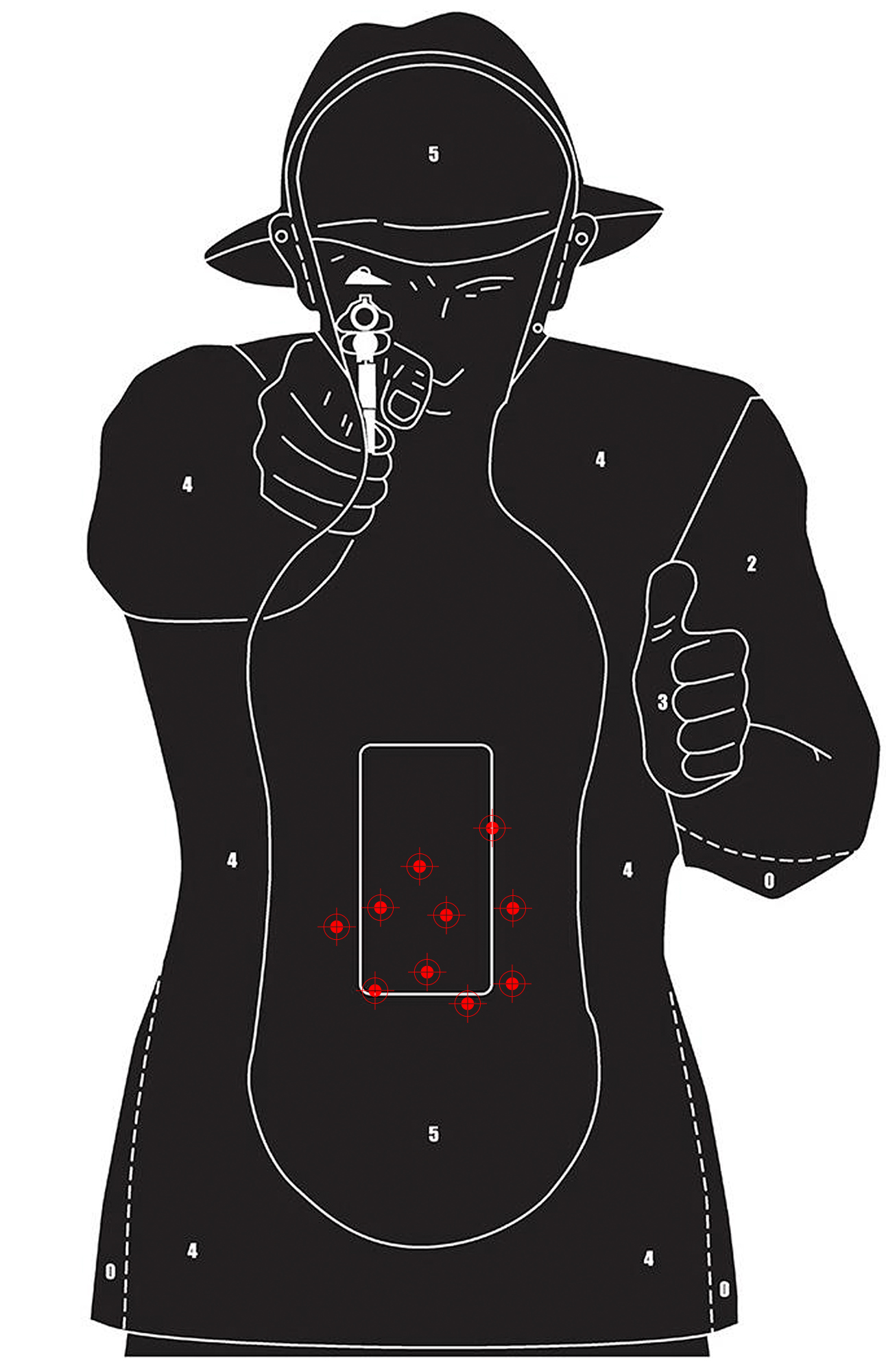
Full-auto
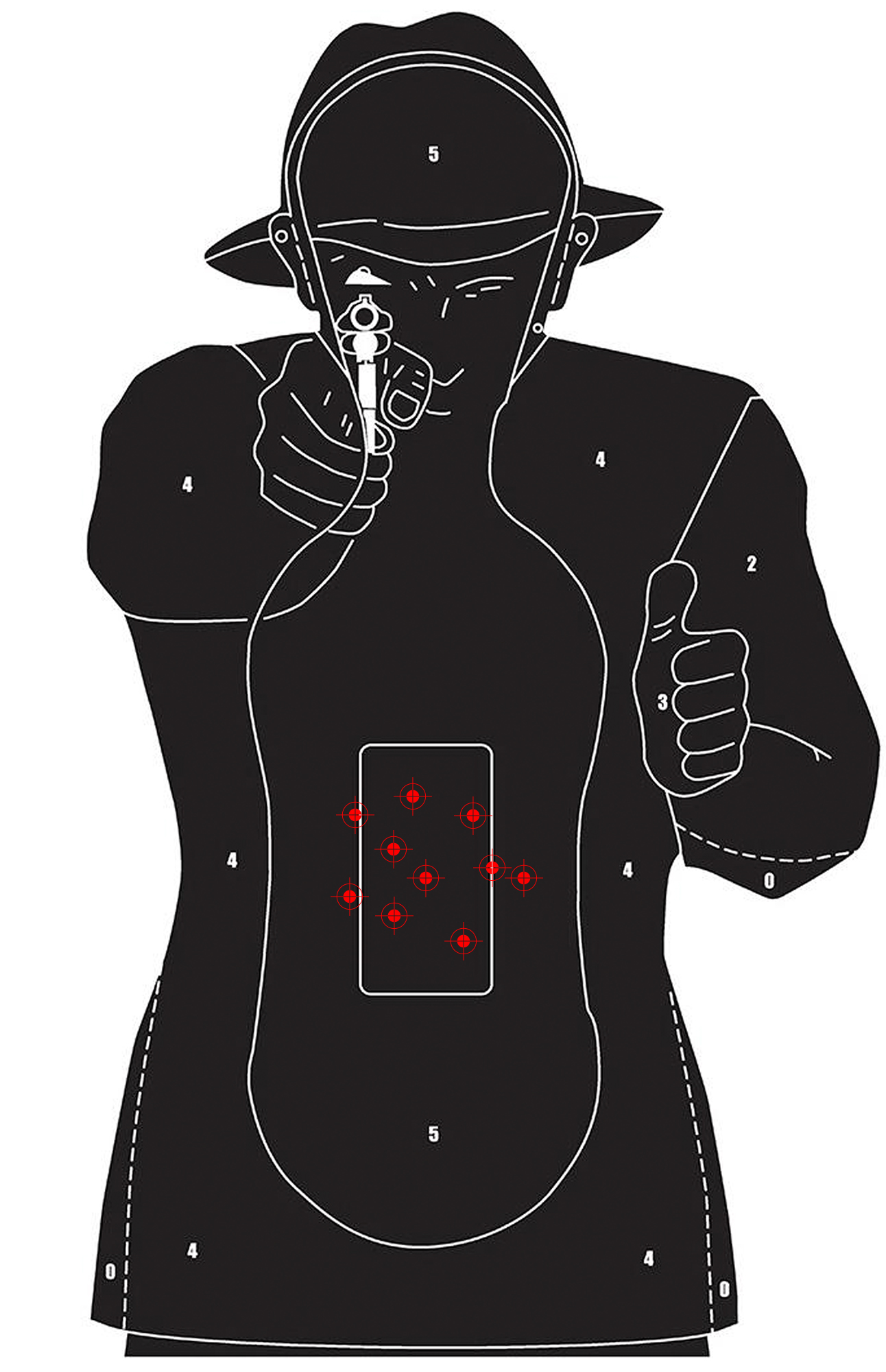
As you can see the 16 cm long barrel does not allow to treat this replica as a DMR, but at close distances it is quite enough. In this context, the replica's accuracy is satisfactory.
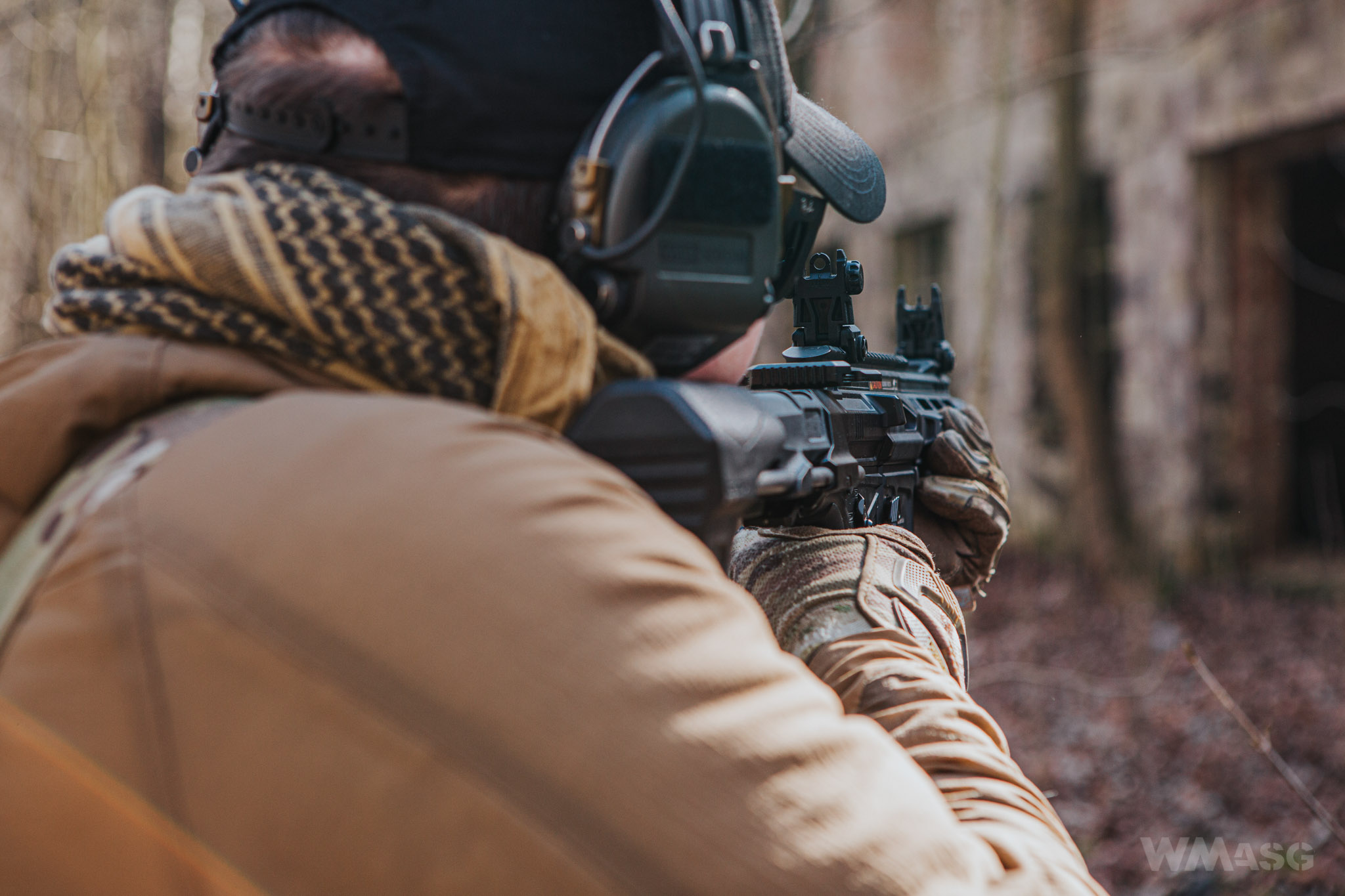
Summary
CXP-MARS PDW9 is the first pistol carbine replica in the offer of ICS. However, the obvious fashion for such designs suggests that this is just the beginning. Therefore, we can expect further versions of the replica with different details - handguard, grip or stock. From the technical side, the replica works flawlessly, which is not surprising given the manufacturer's experience, but in our opinion, the expanded functionality of the tested version with the E-Trigger system is a bit exaggerated. If the difference in price between this one and the version with a standard contact switch is not significant, then it is definitely worth to choose E-Trigger version. But if the difference is big then it is not worth it. The more so that a simple mosfet is mounted to the standard version anyway. At the moment, the price difference between the two versions is about 30 USD. Do burst and pre-cocking function justify it?
During our tests, we noticed one more aspect. Apparently, and probably also intentionally, the pistol carbine is a compact weapon. Meanwhile, the extended stock and the long straight magazine make the PDW9 quite a big replica. Therefore, if you are looking for something really compact, you should probably stick to short replicas of standard ARs fed from 5.56x45 mm caliber magazines. But if you absolutely want to have something using pistol caliber magazines, the PDW9 seems to be a good choice.
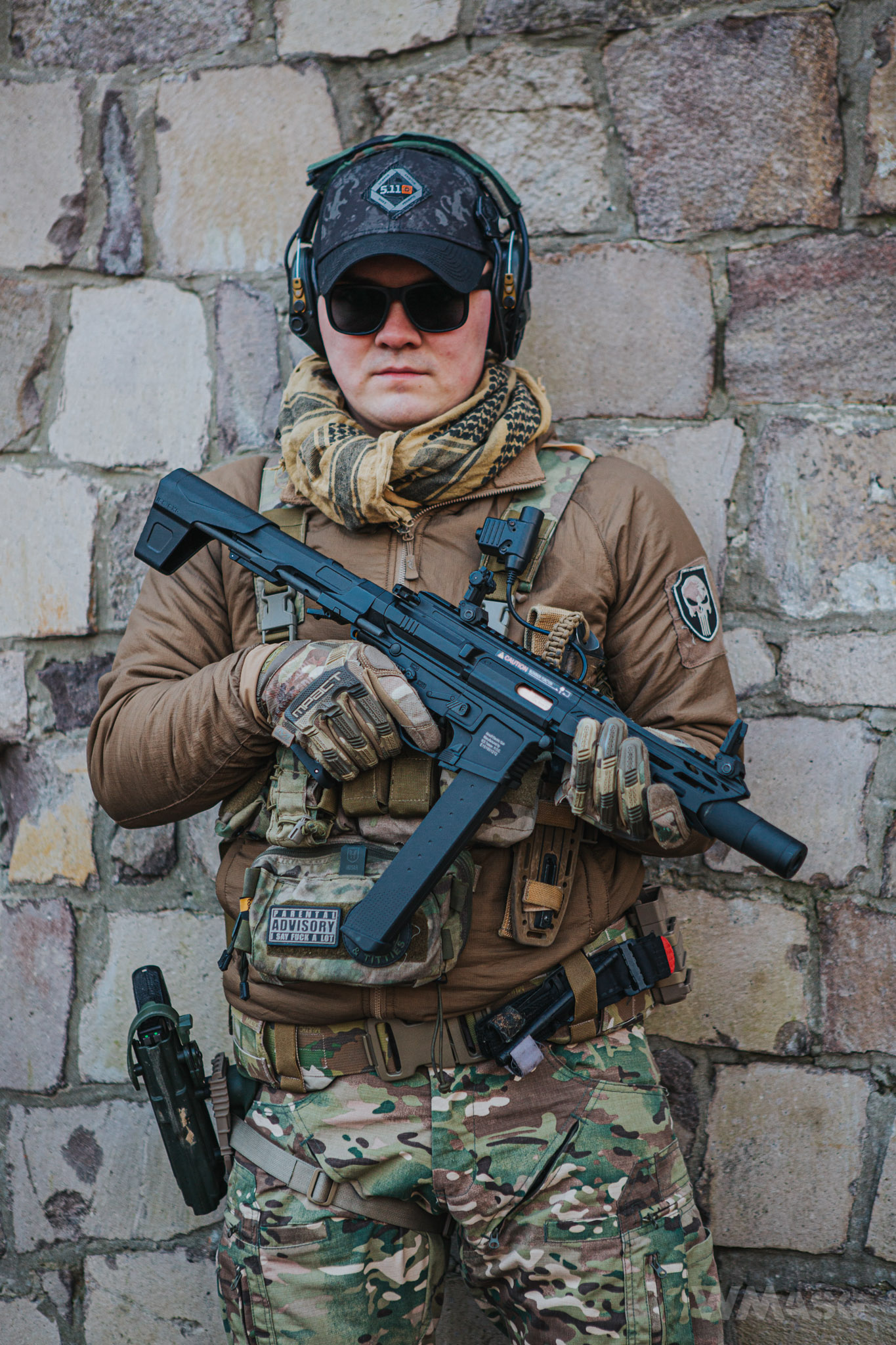
On the next page technical details for those of you interested.

